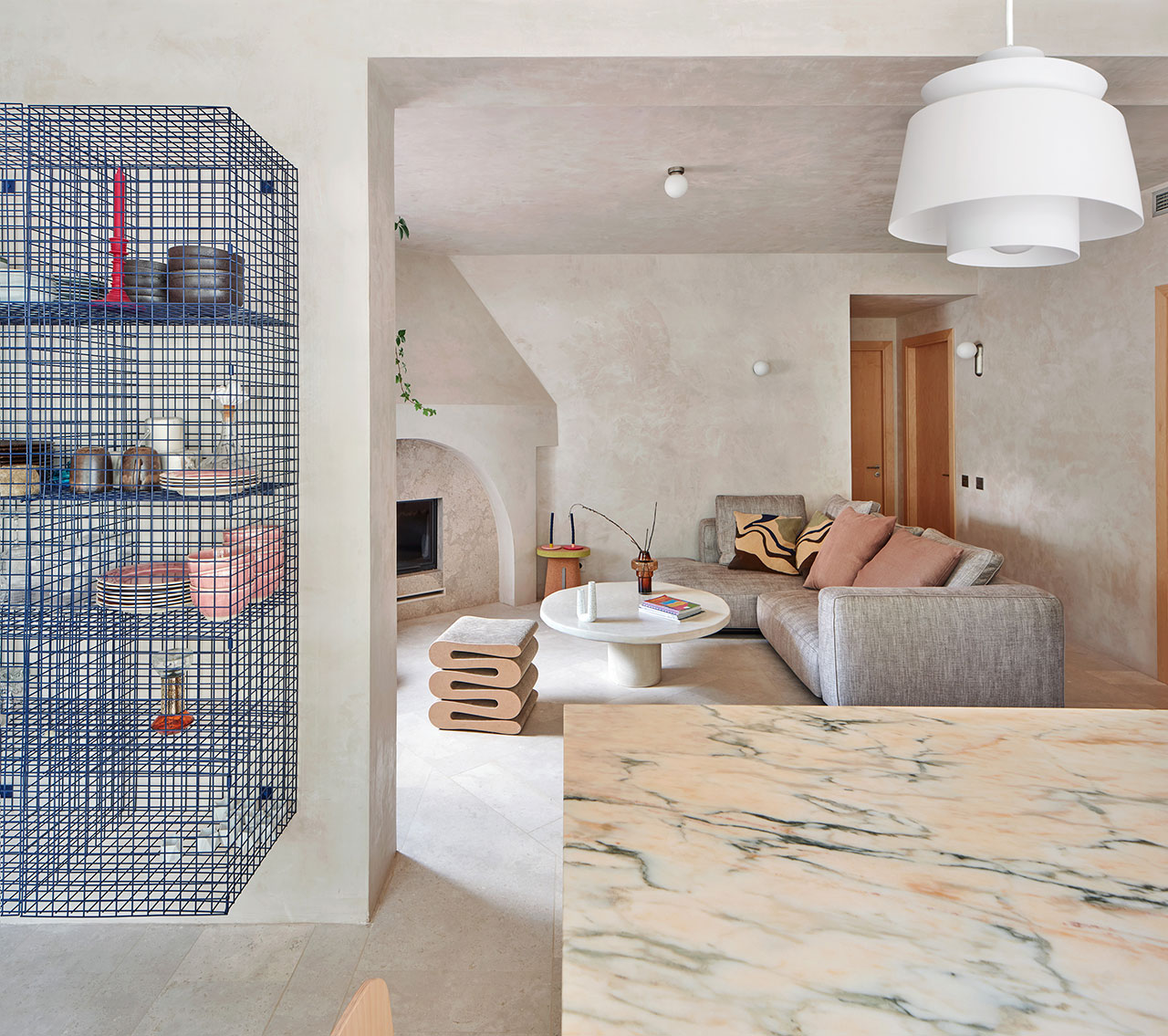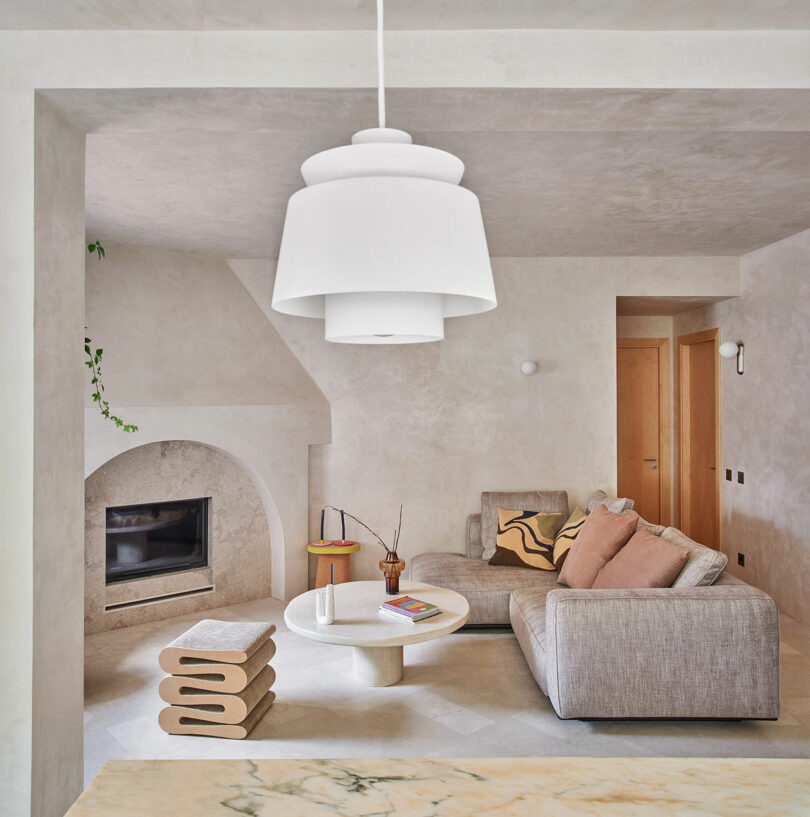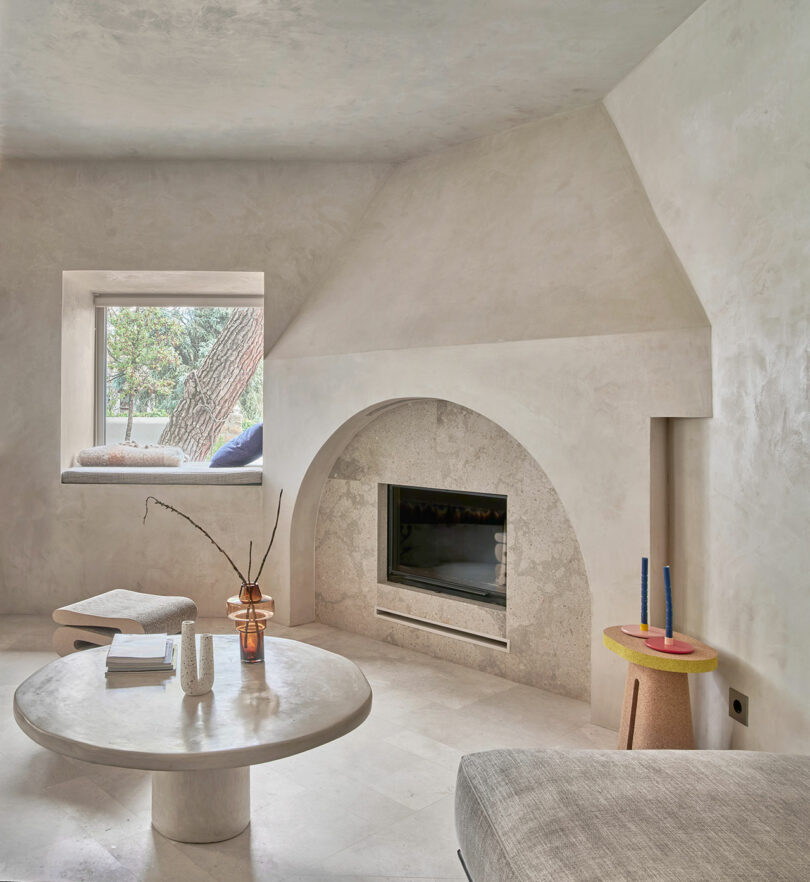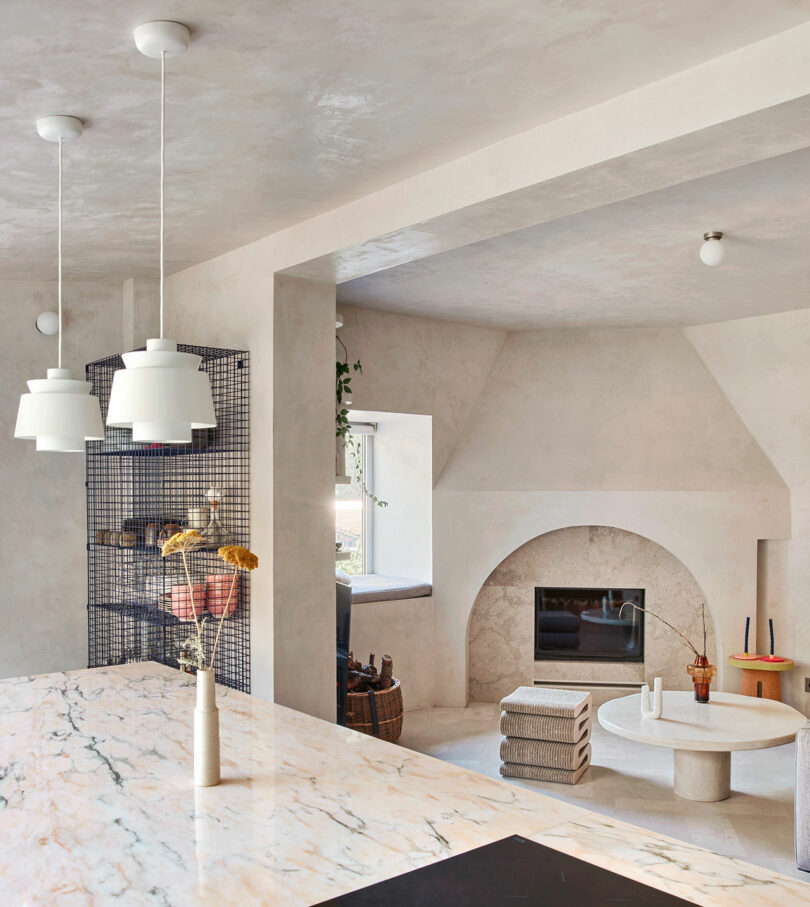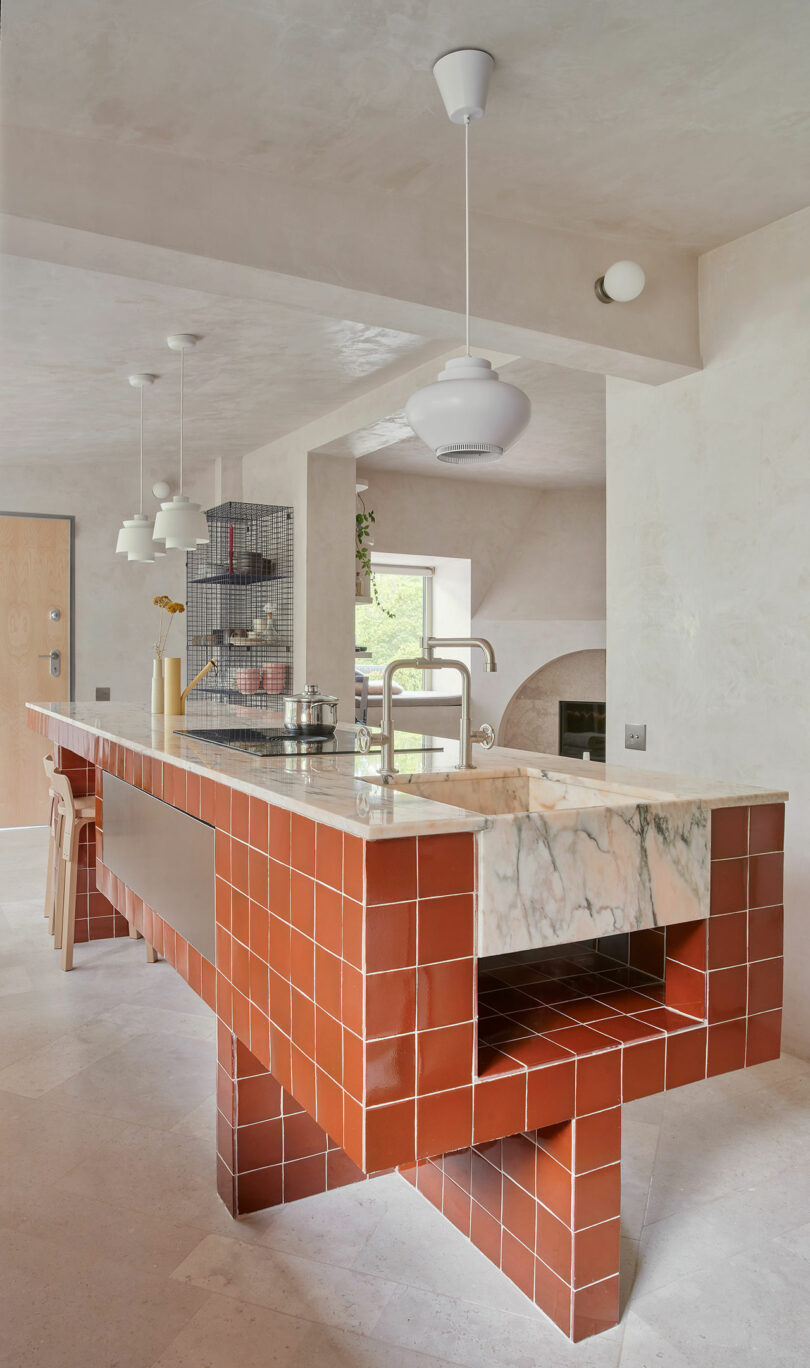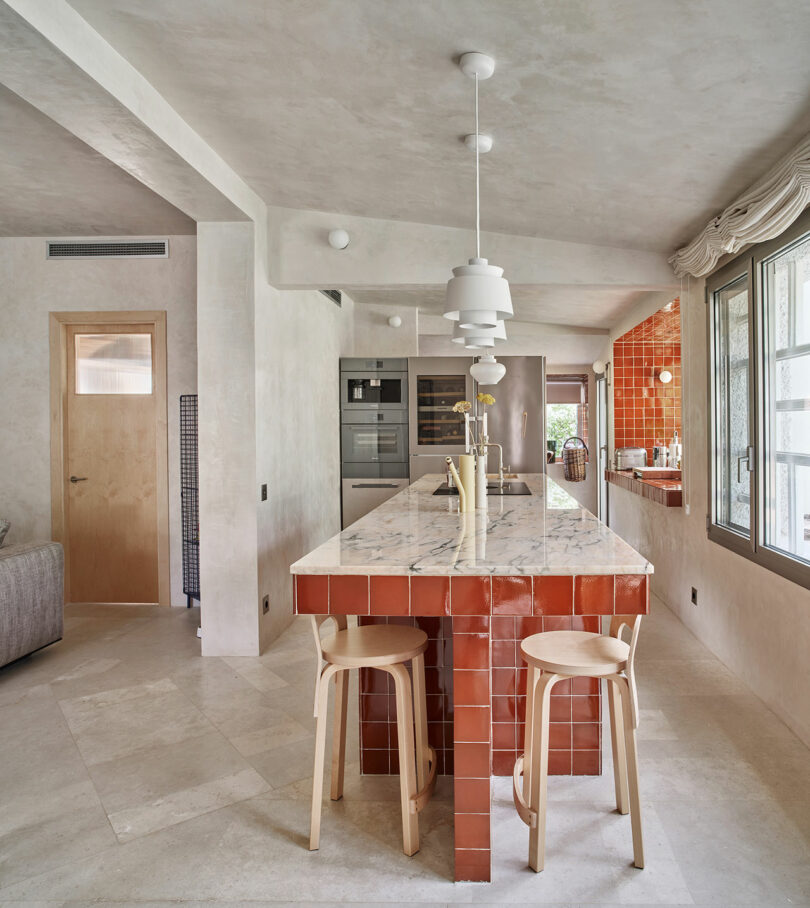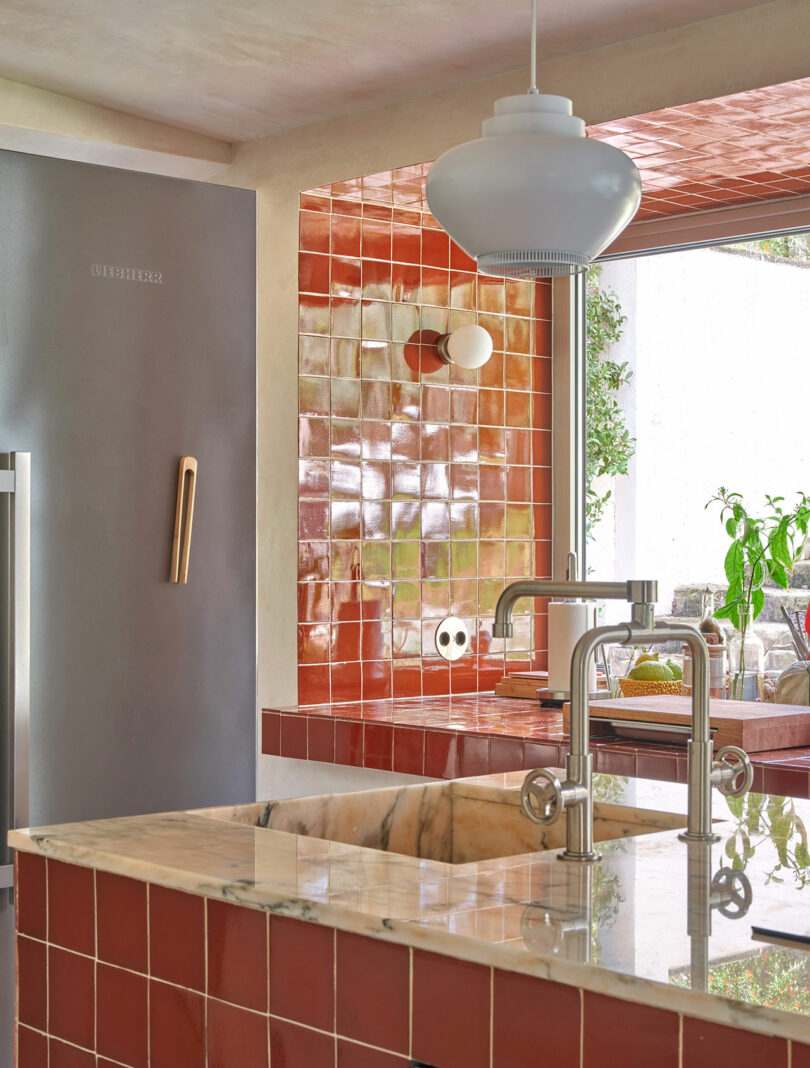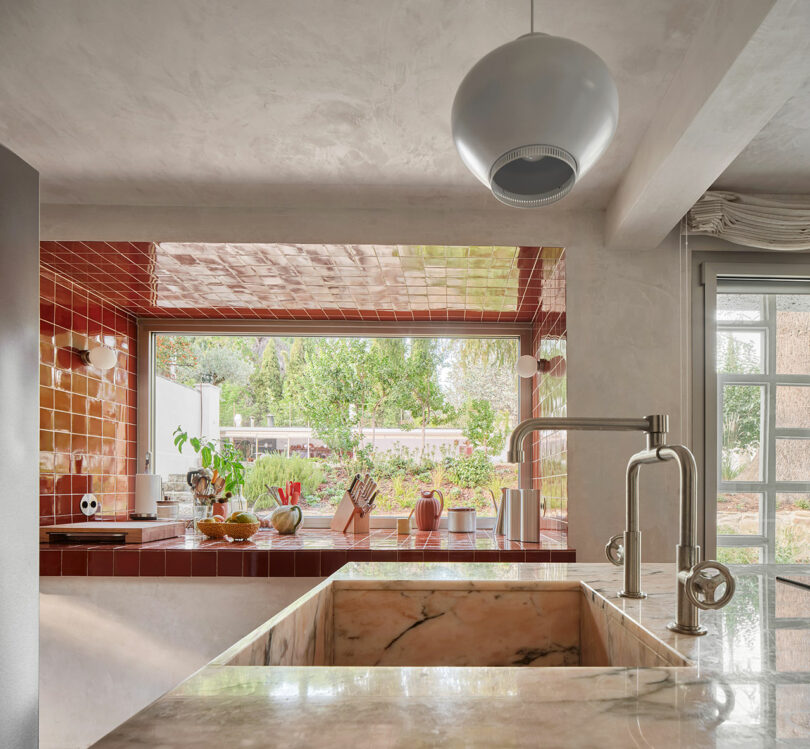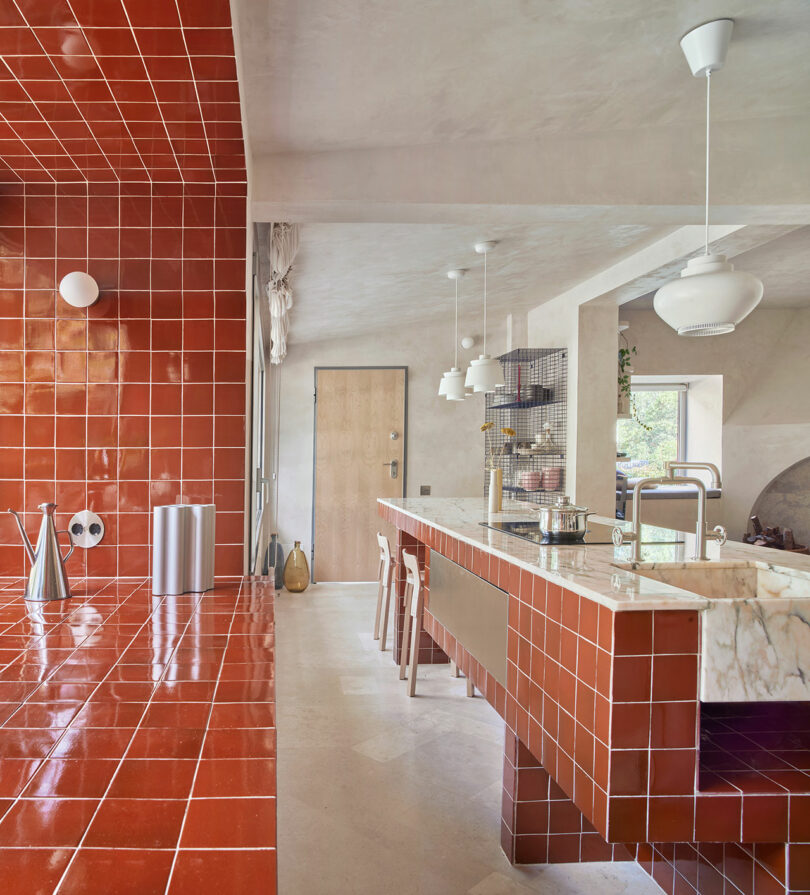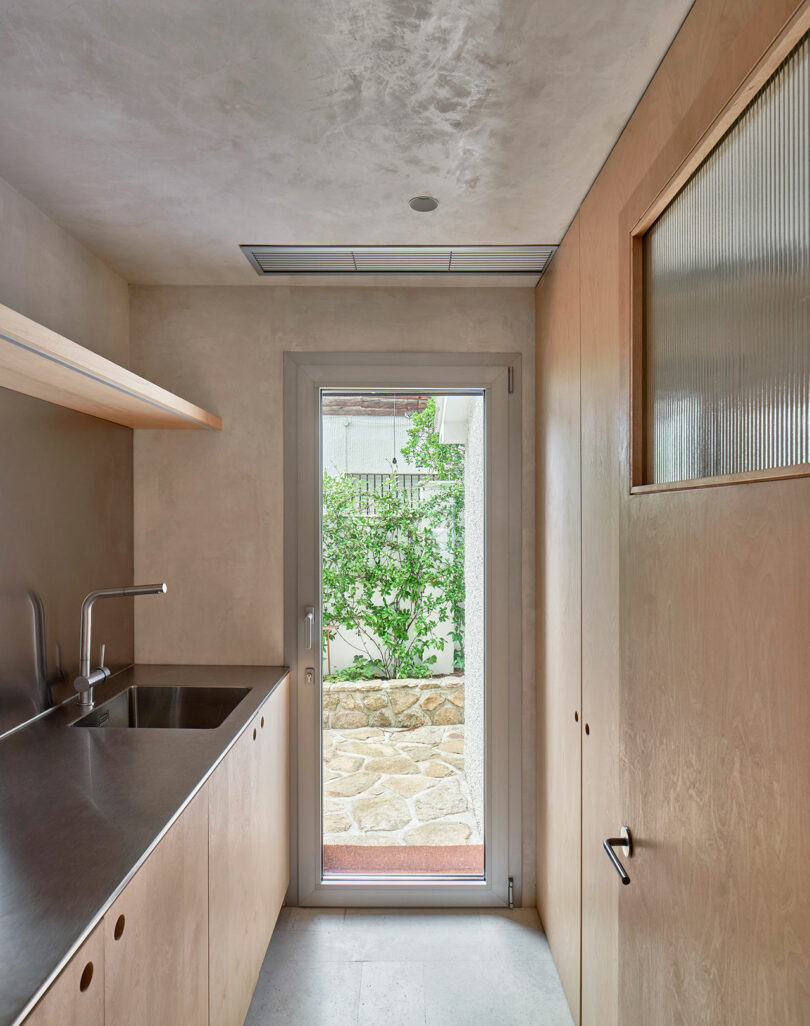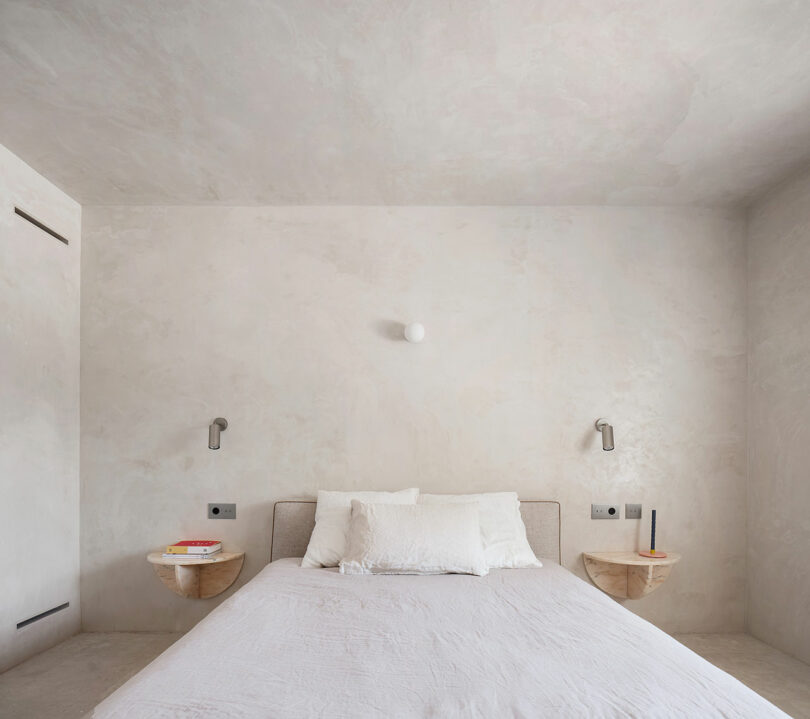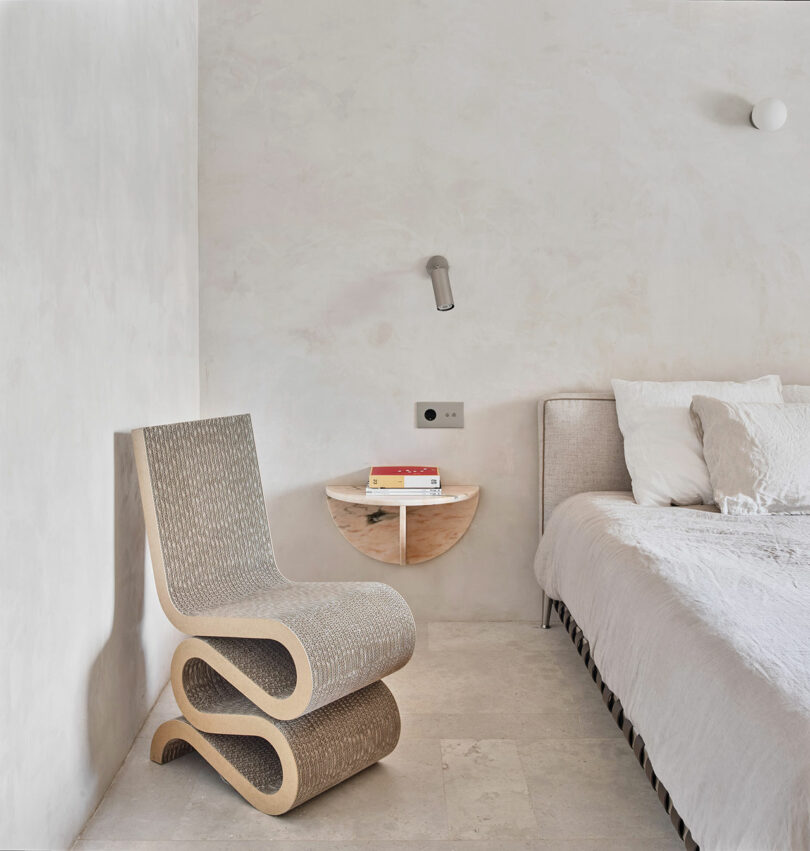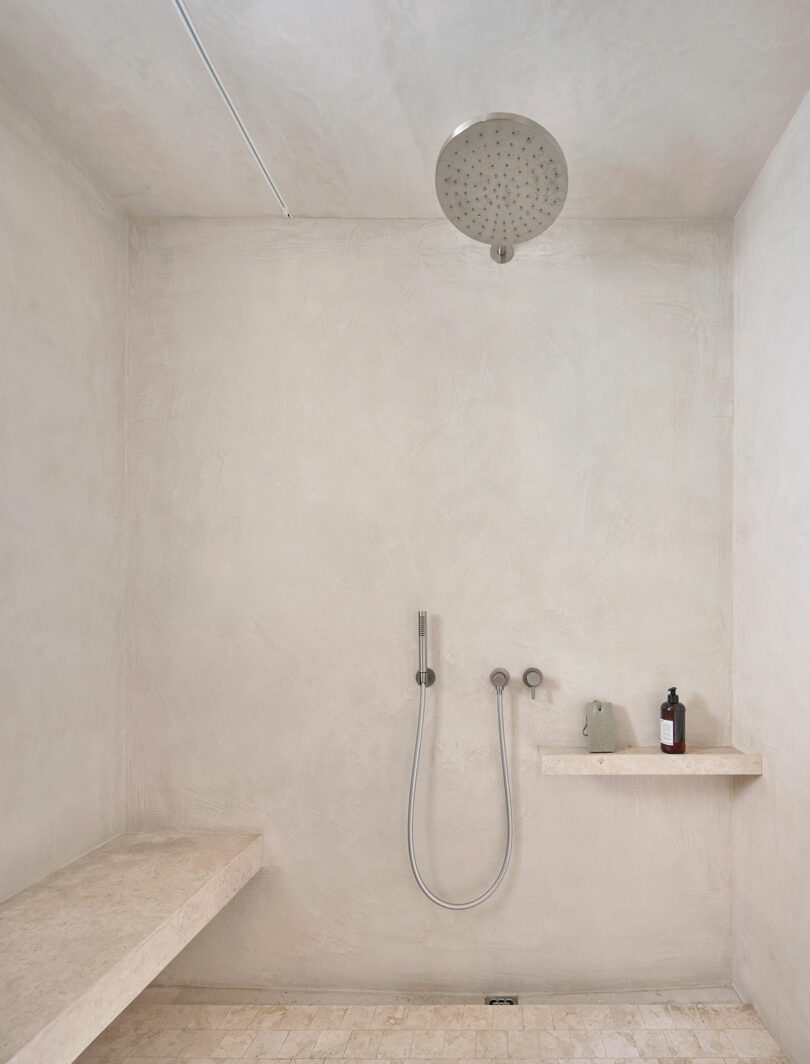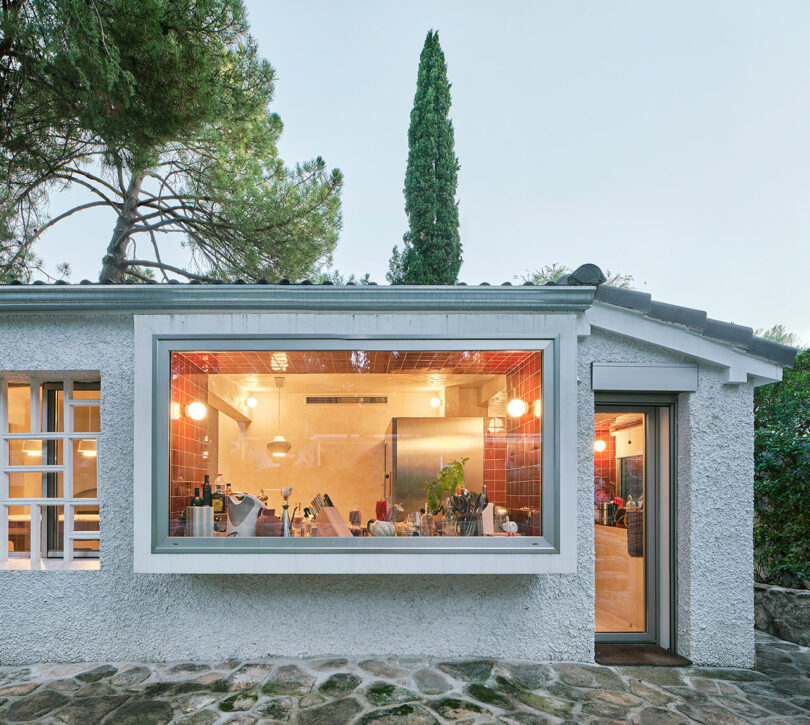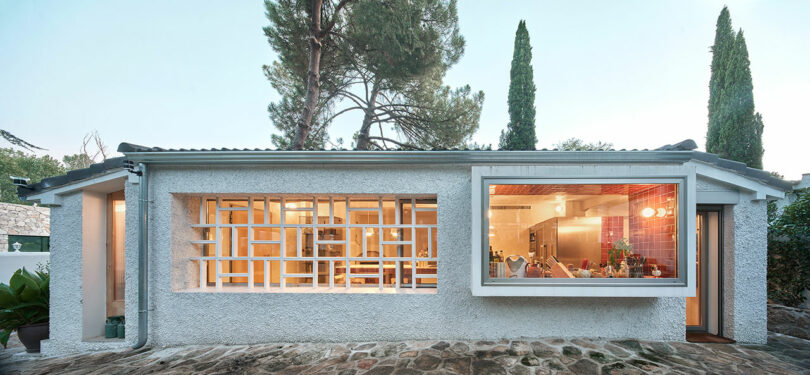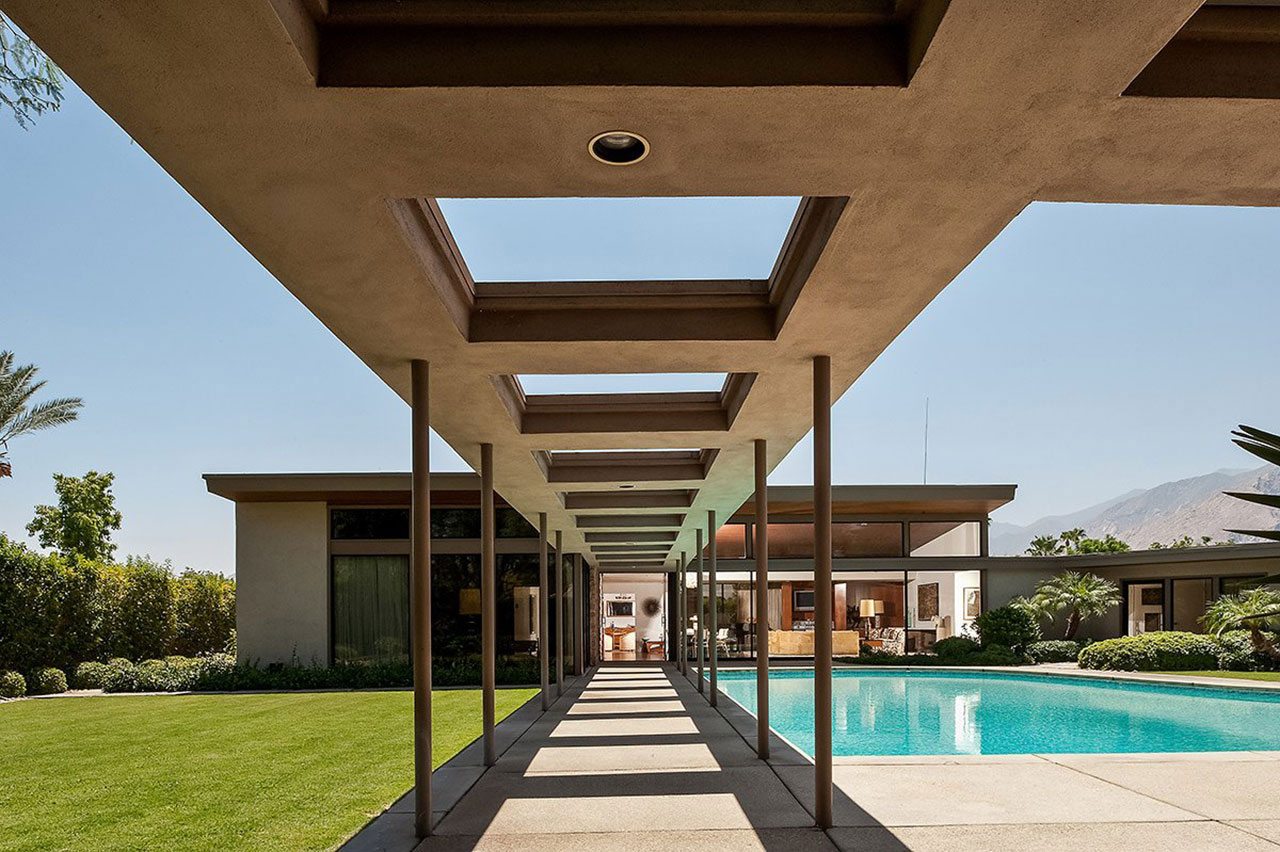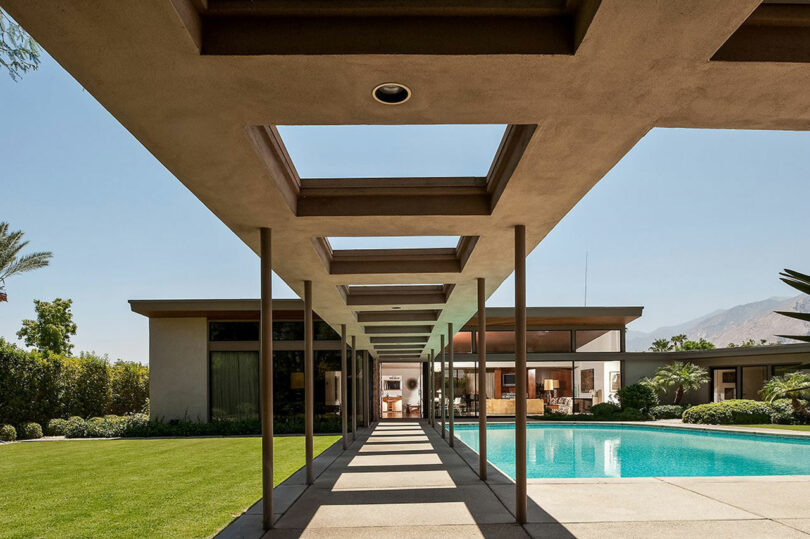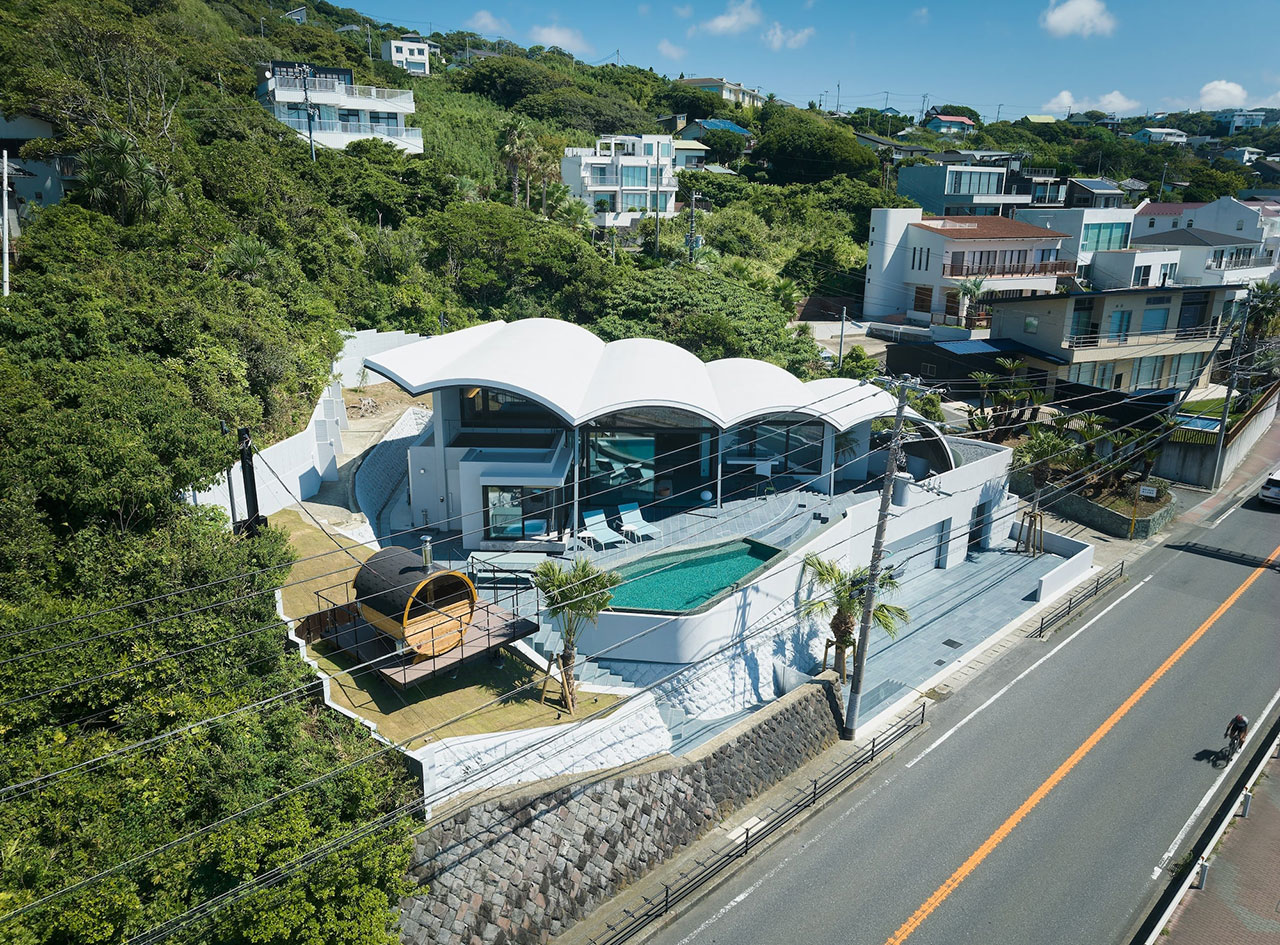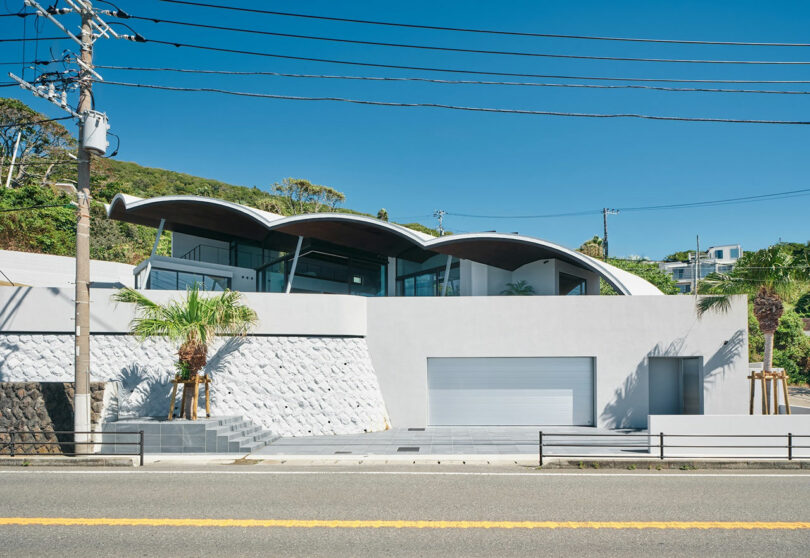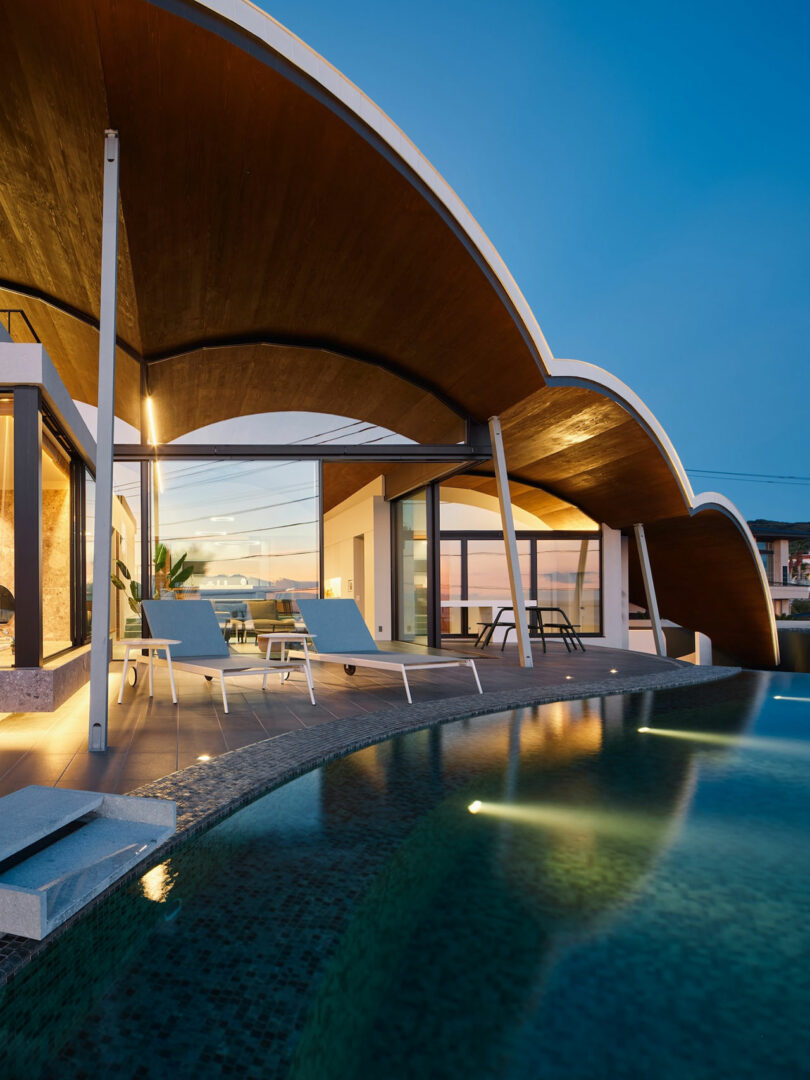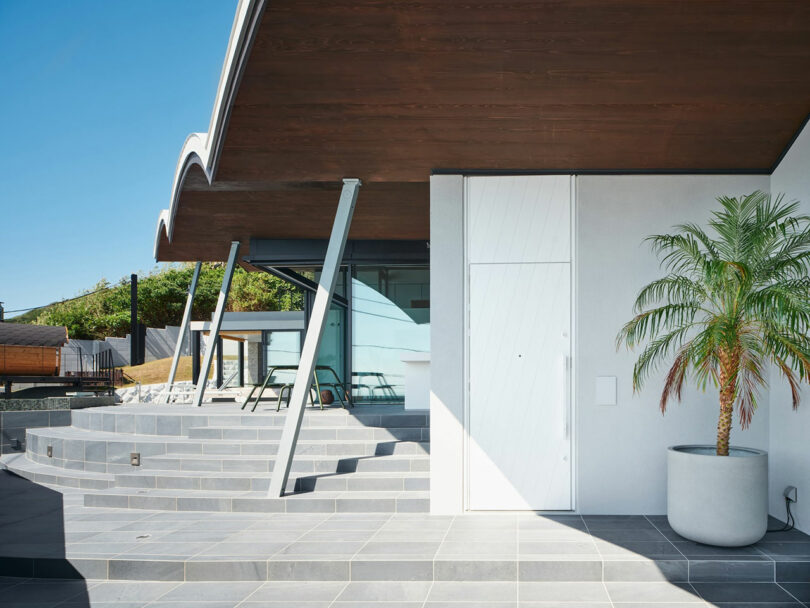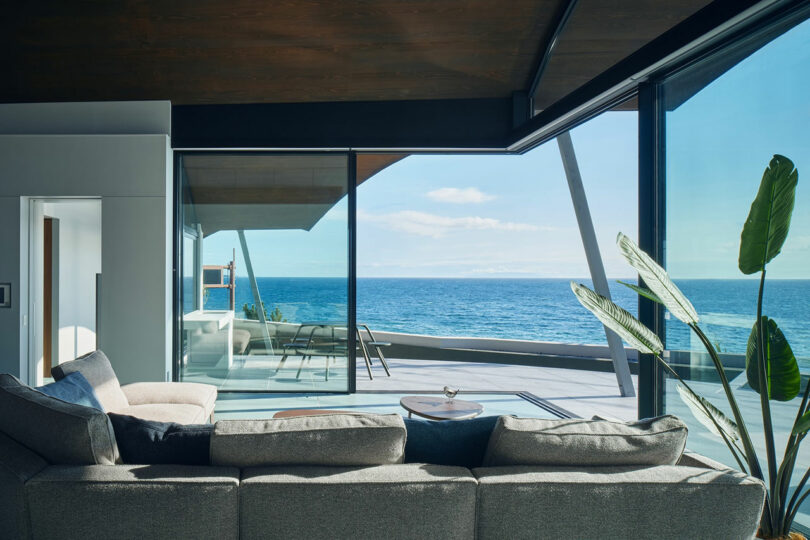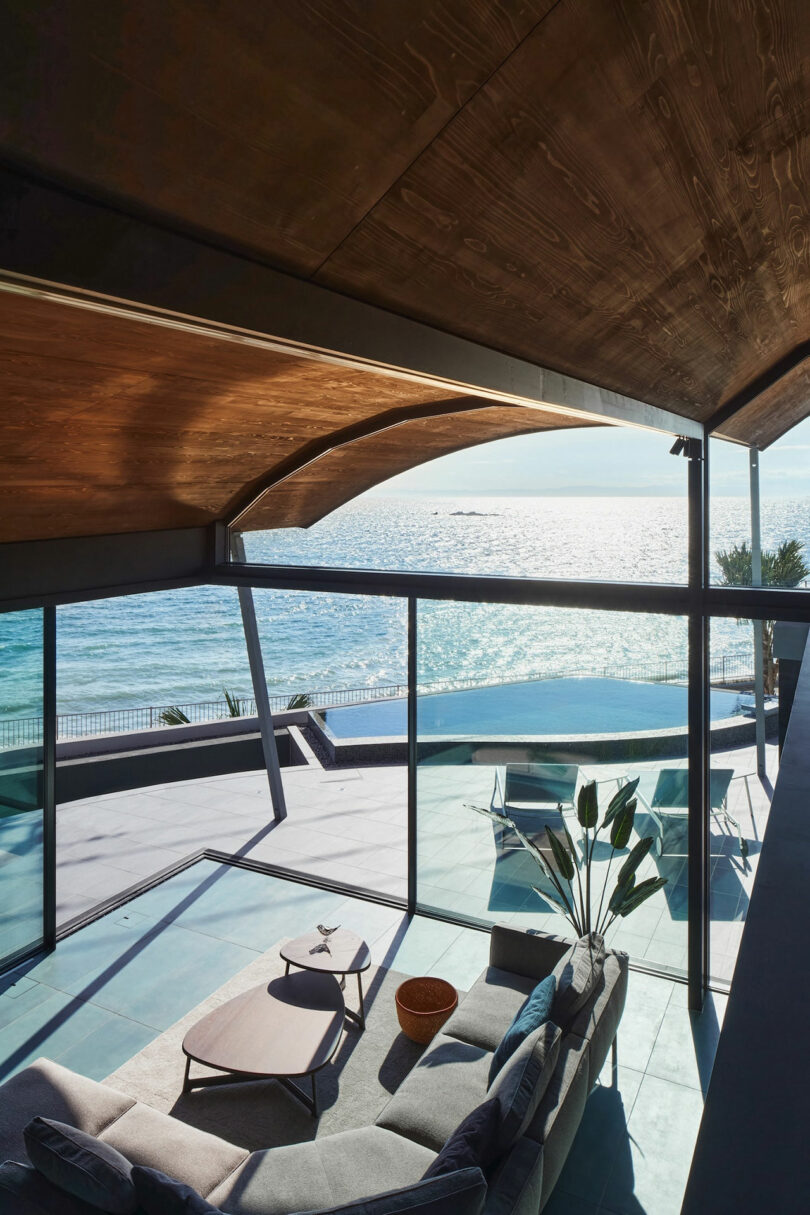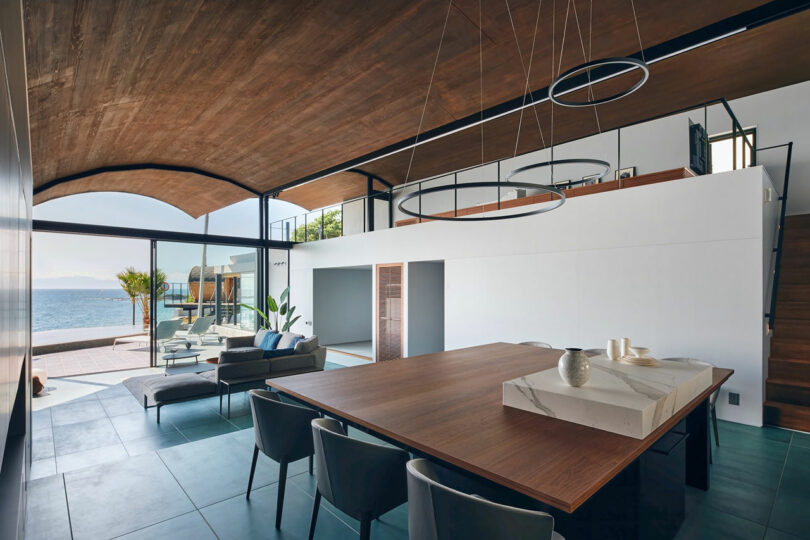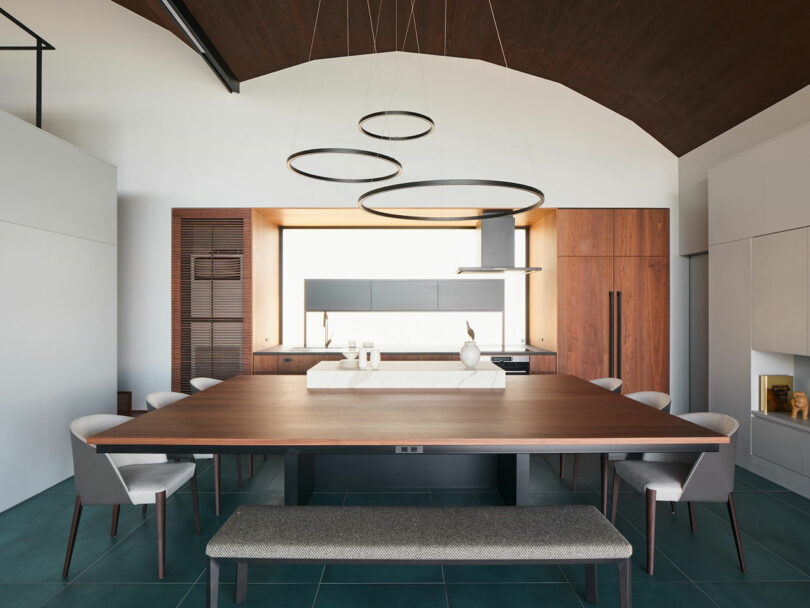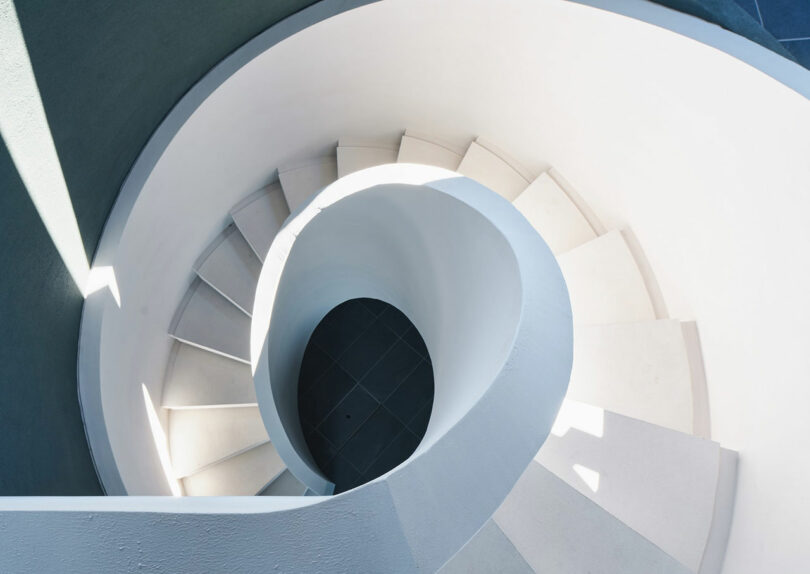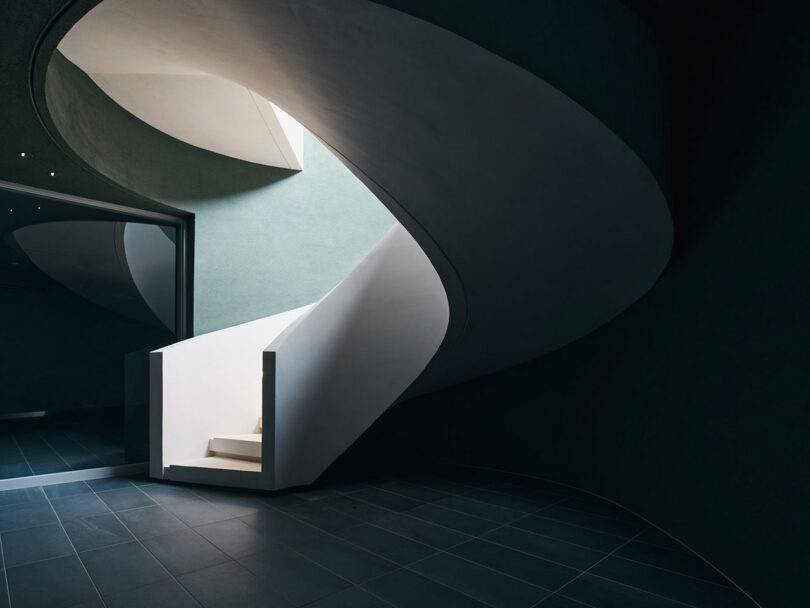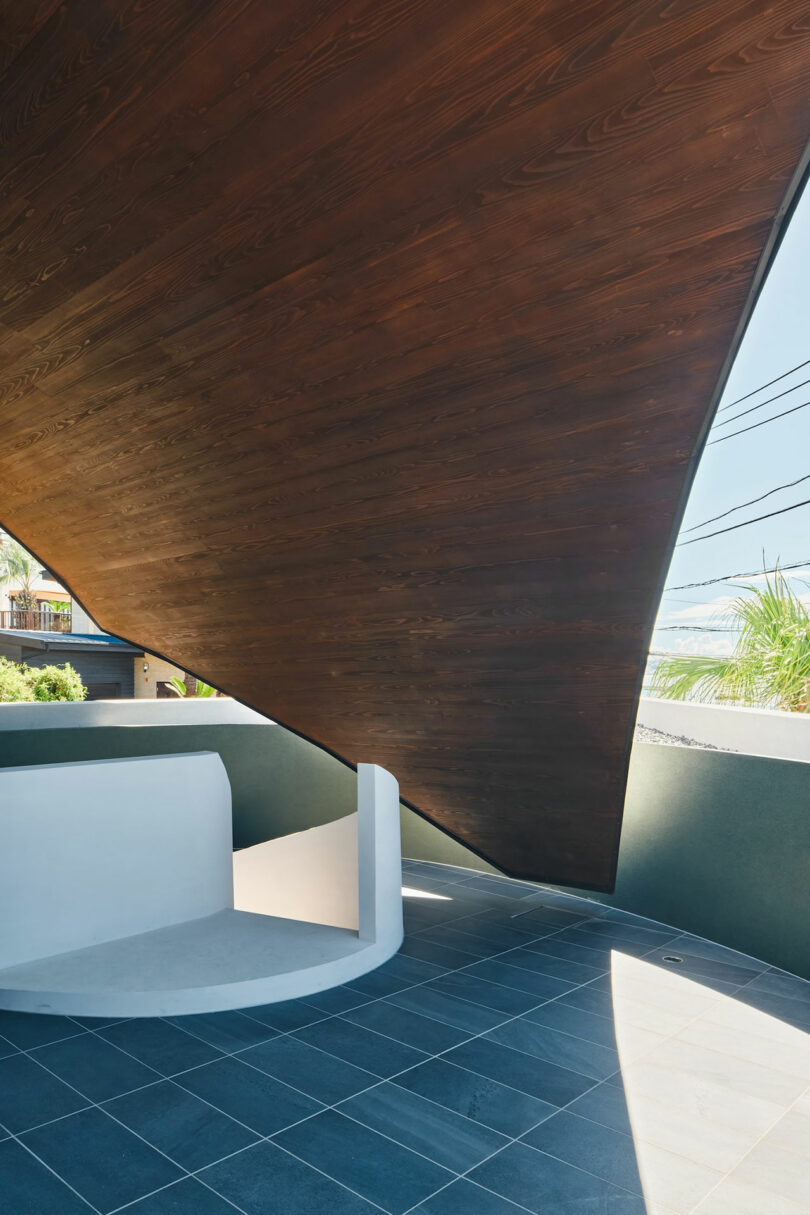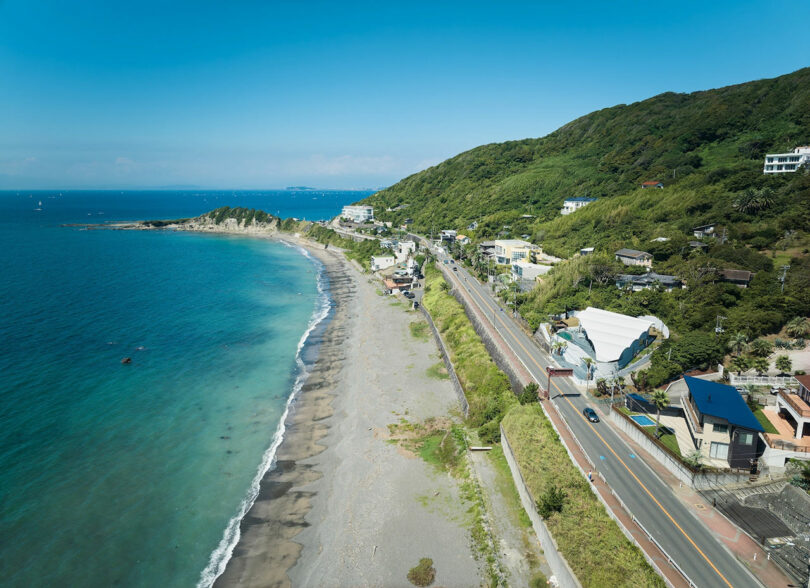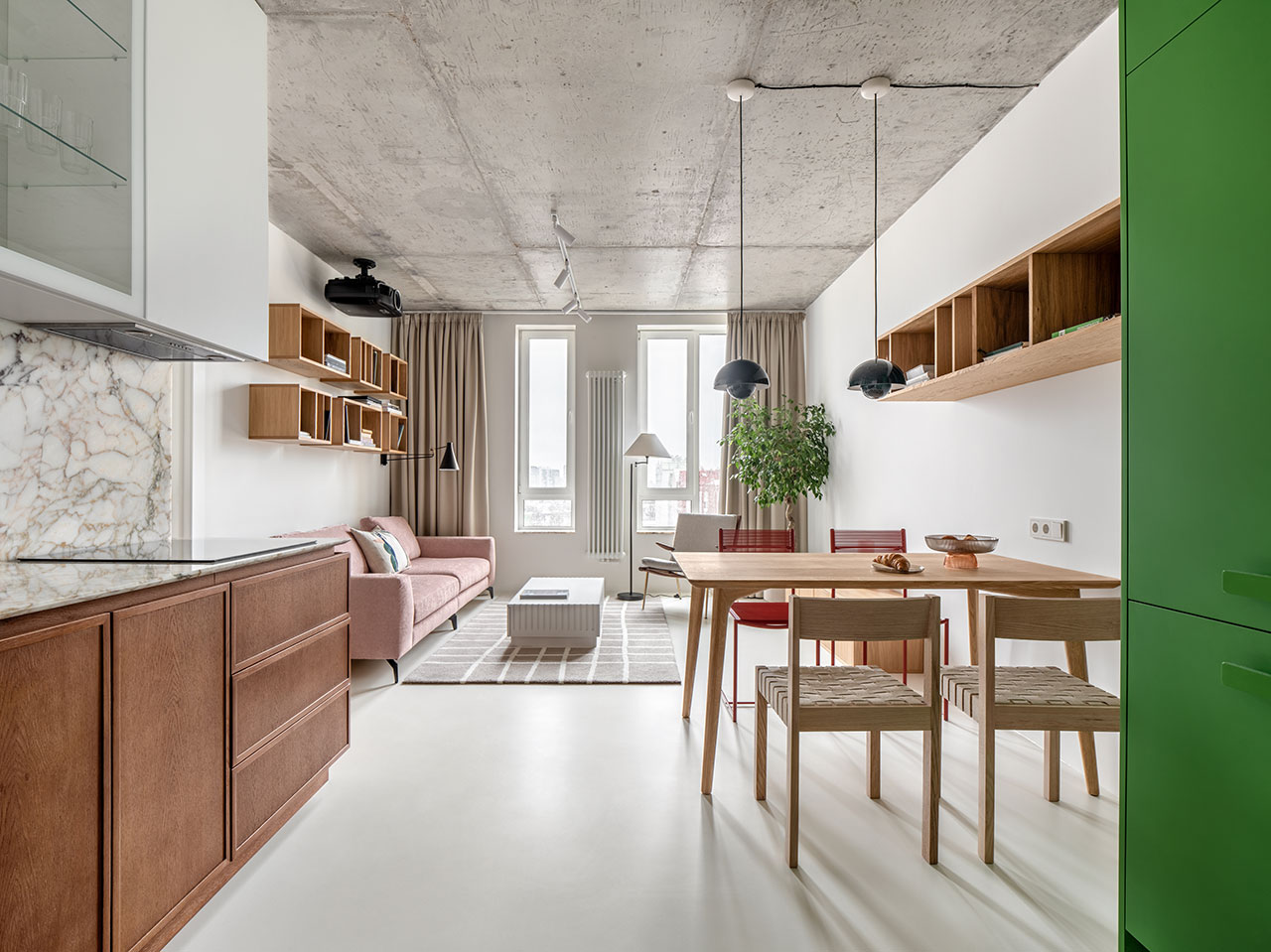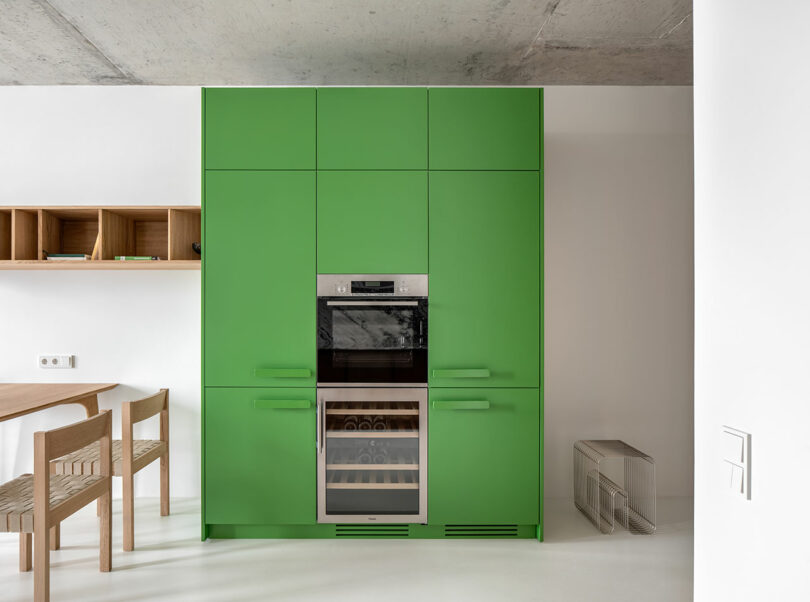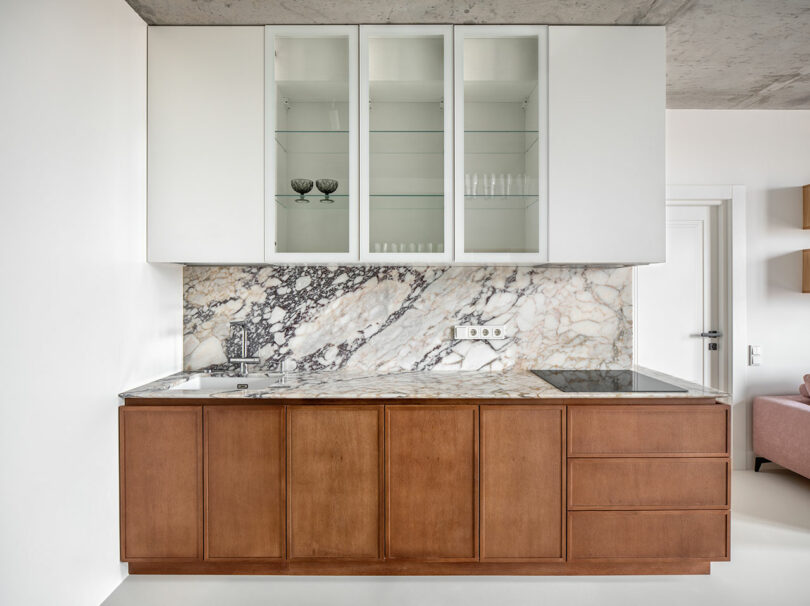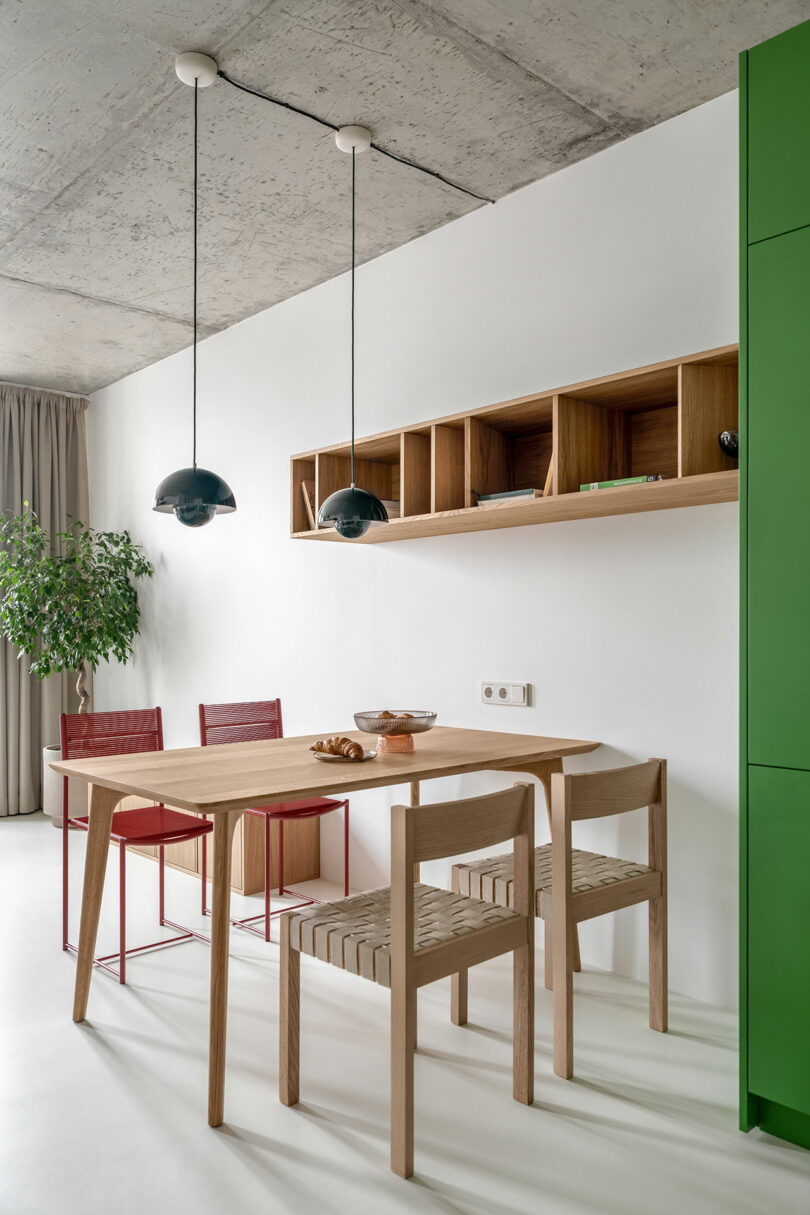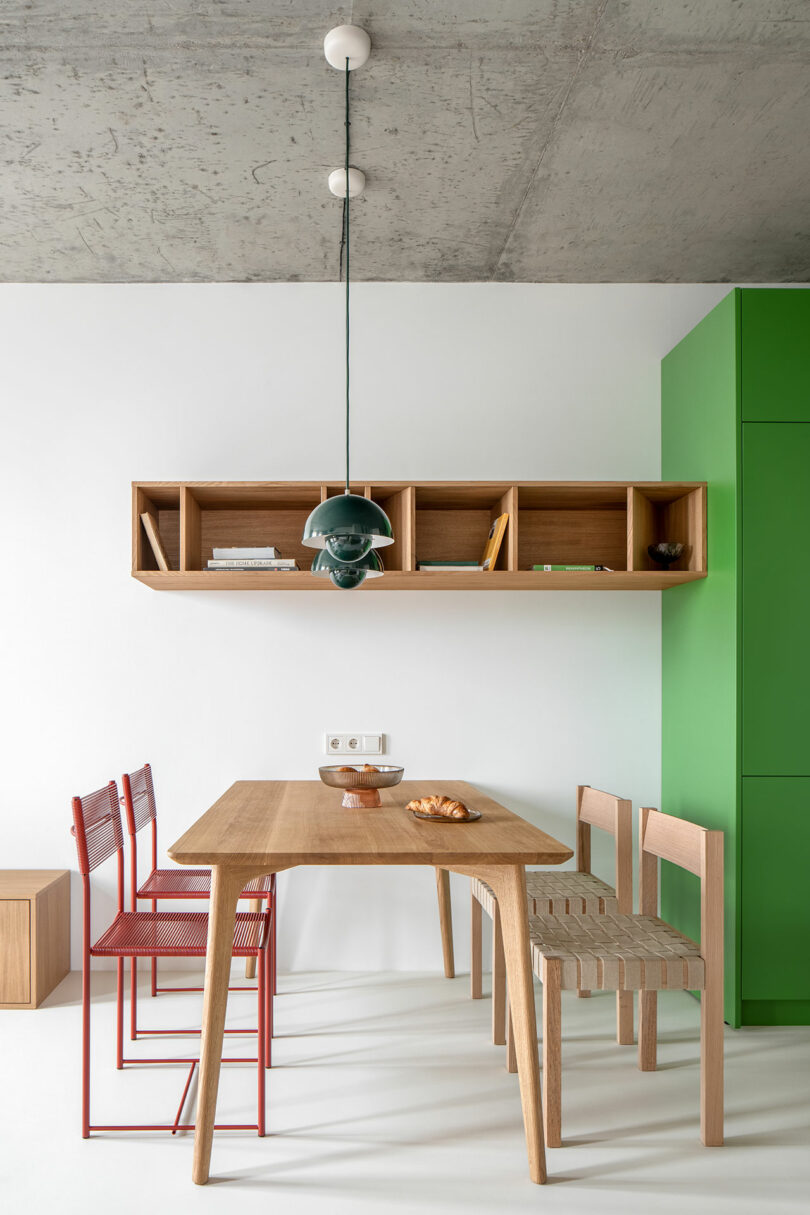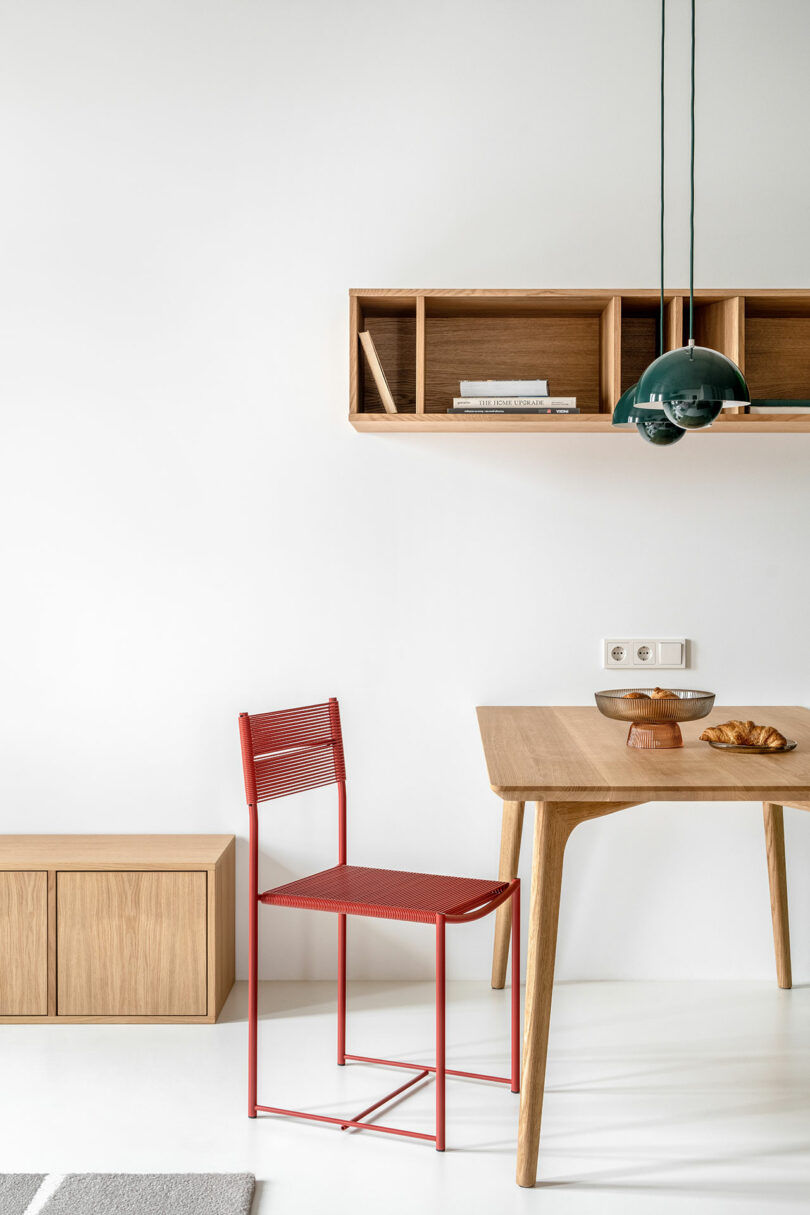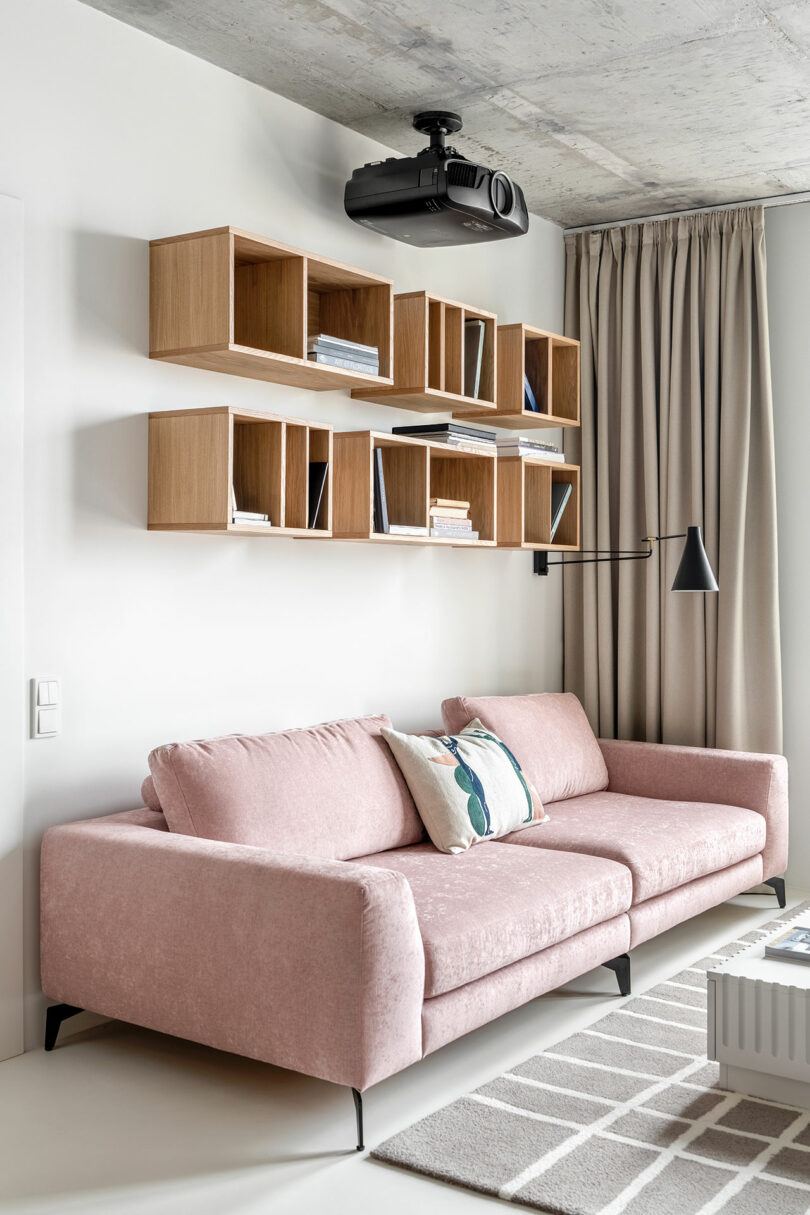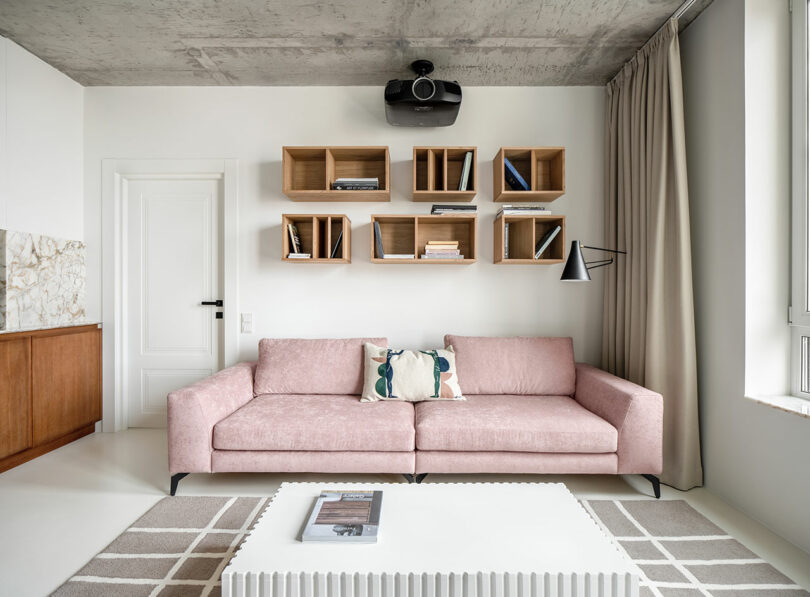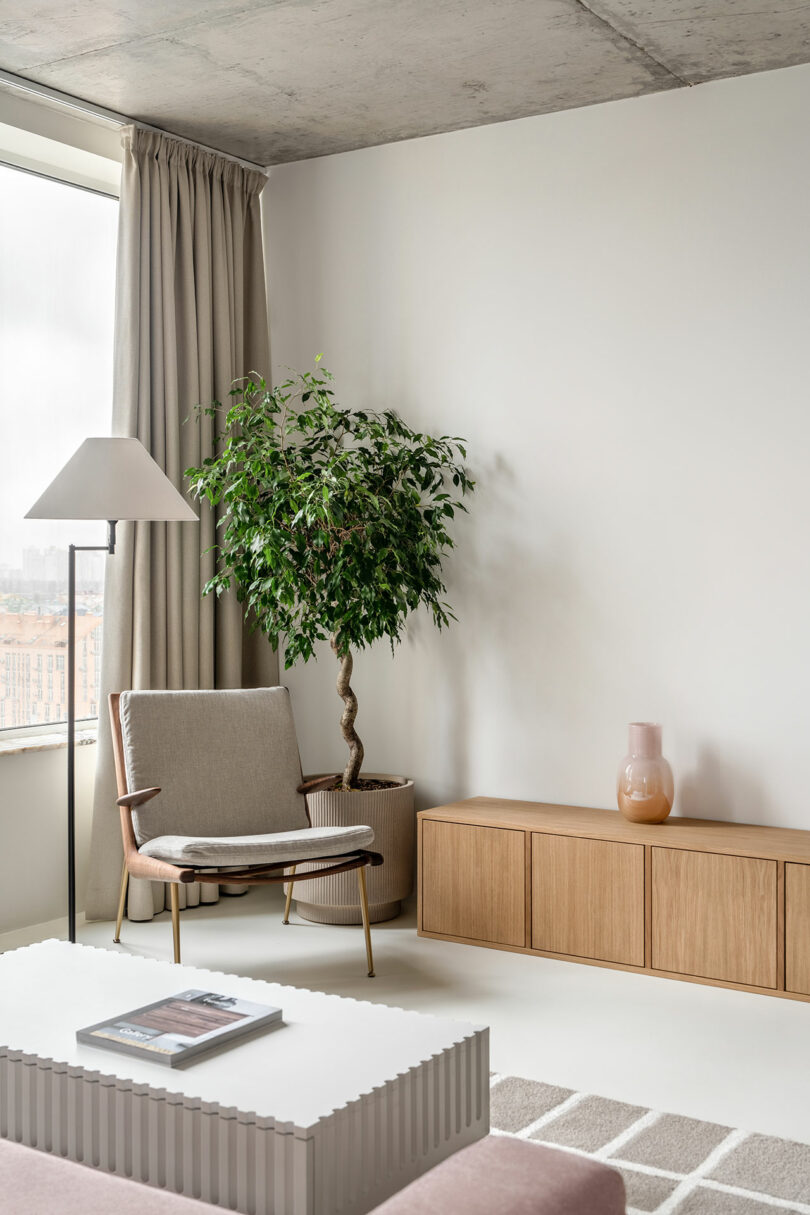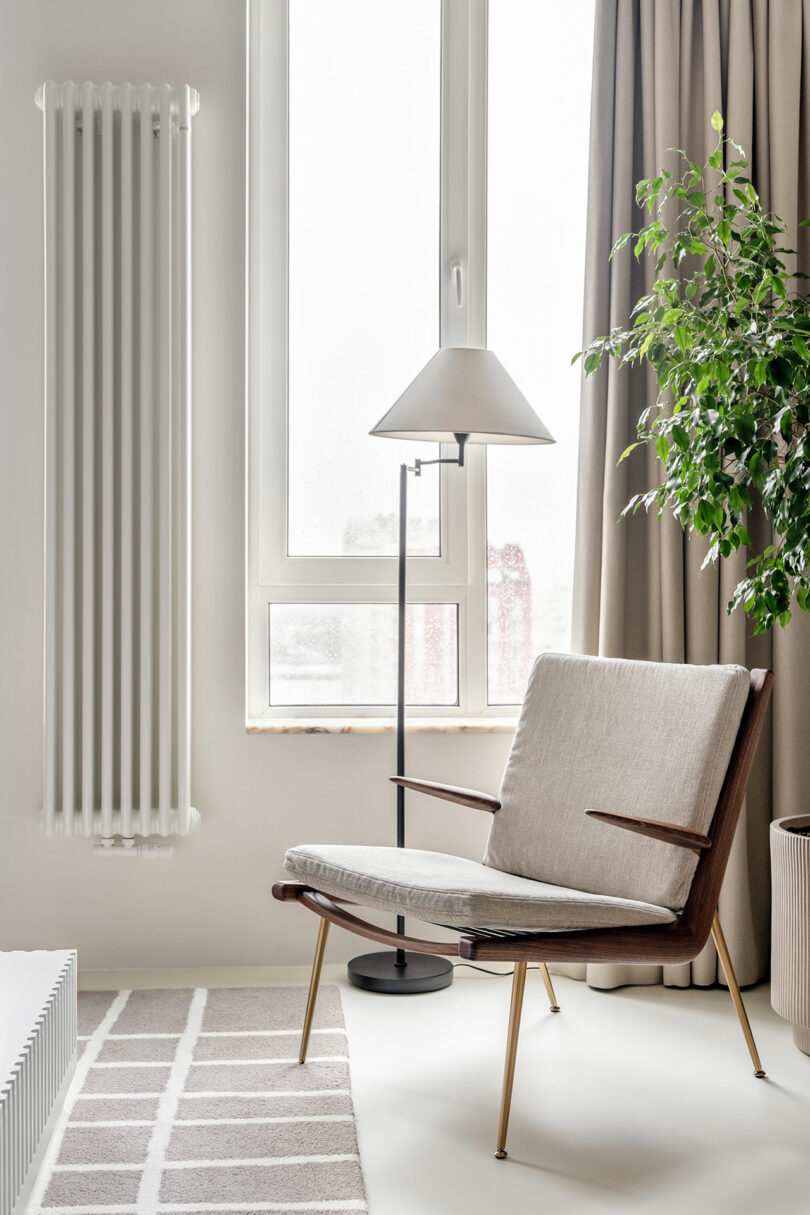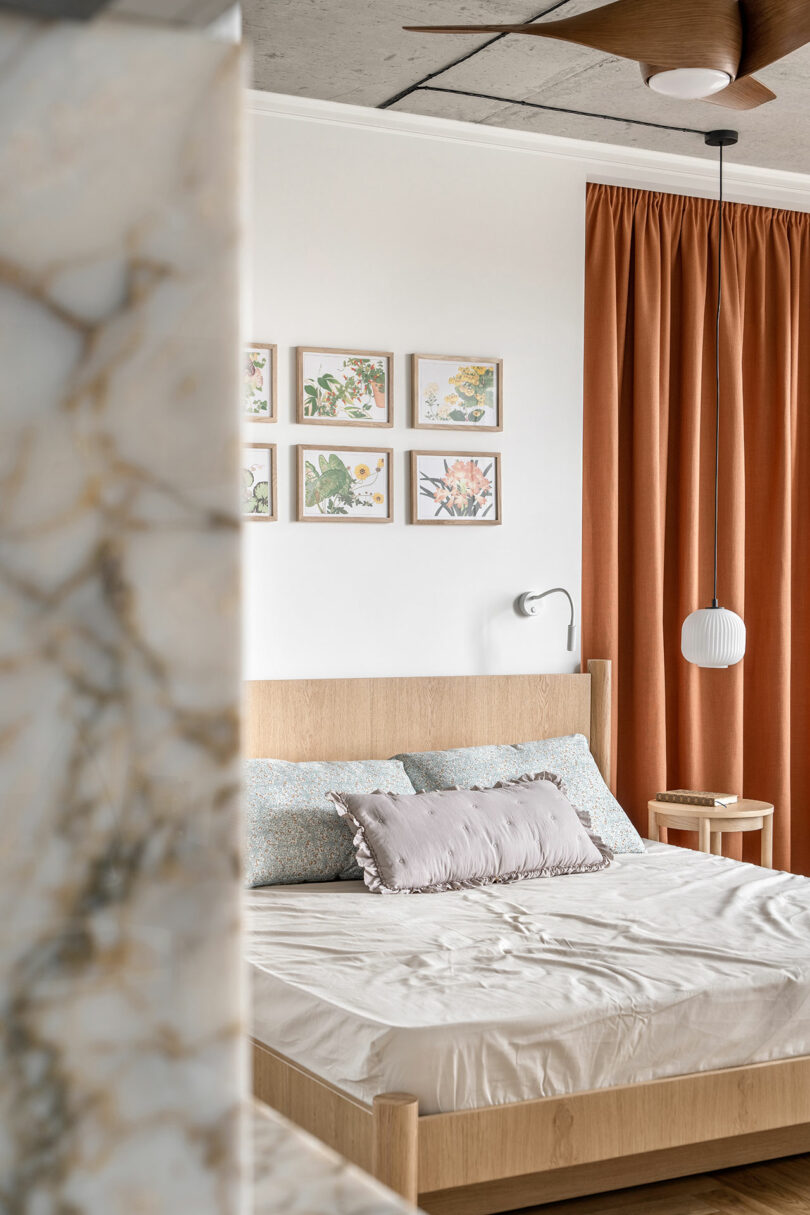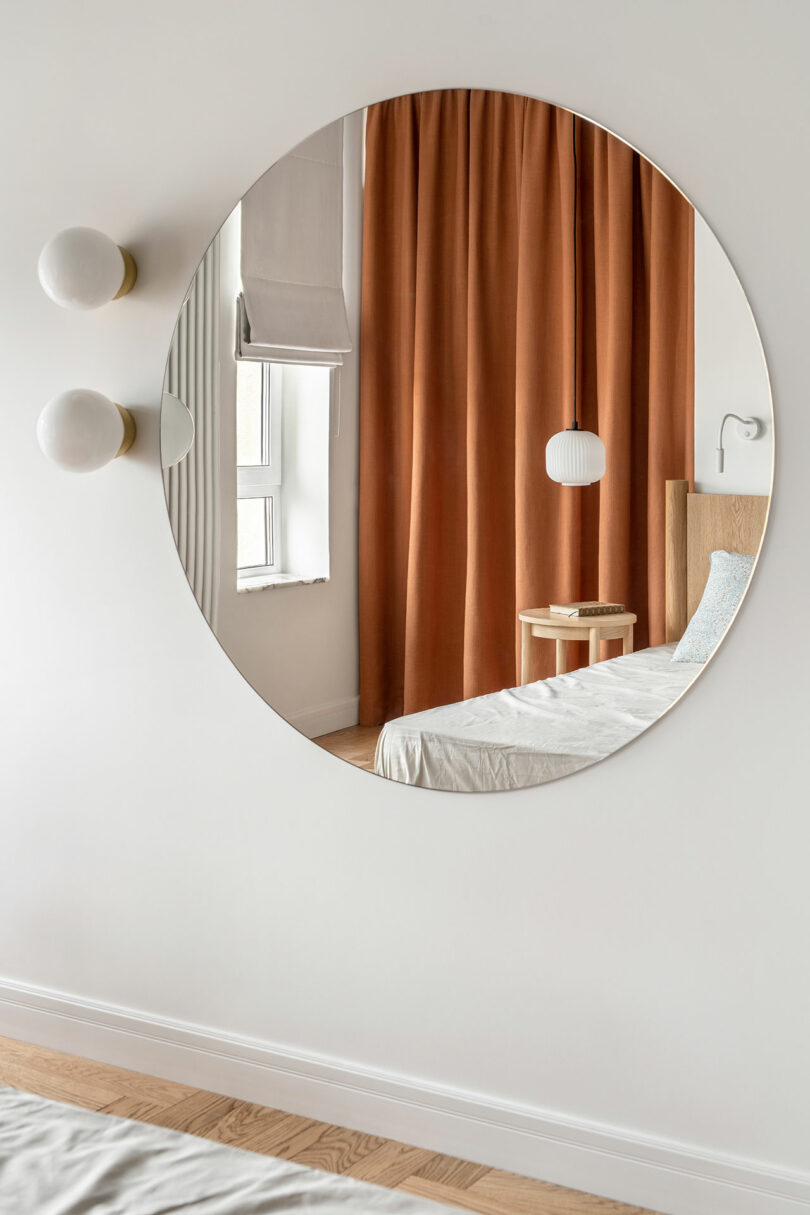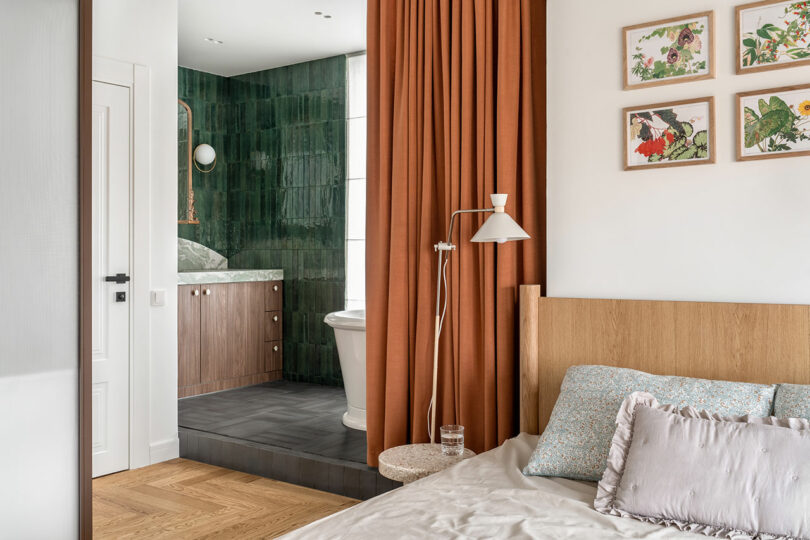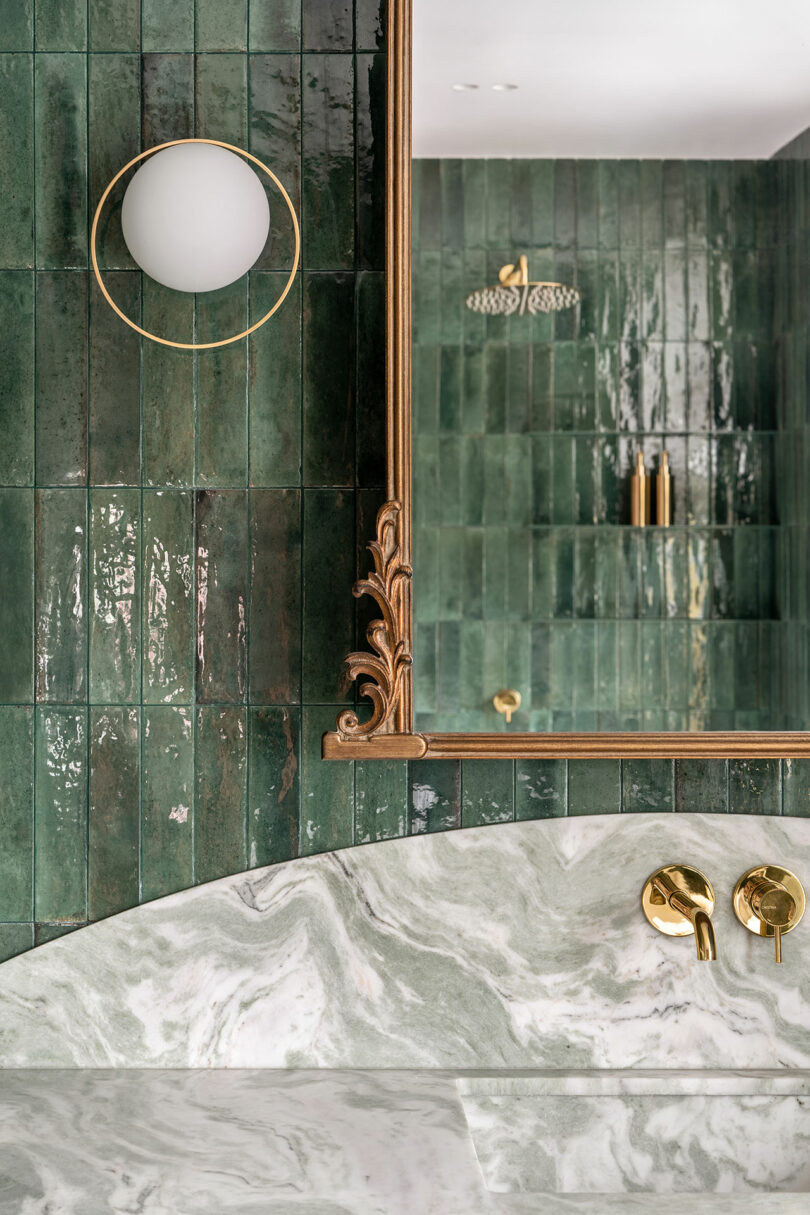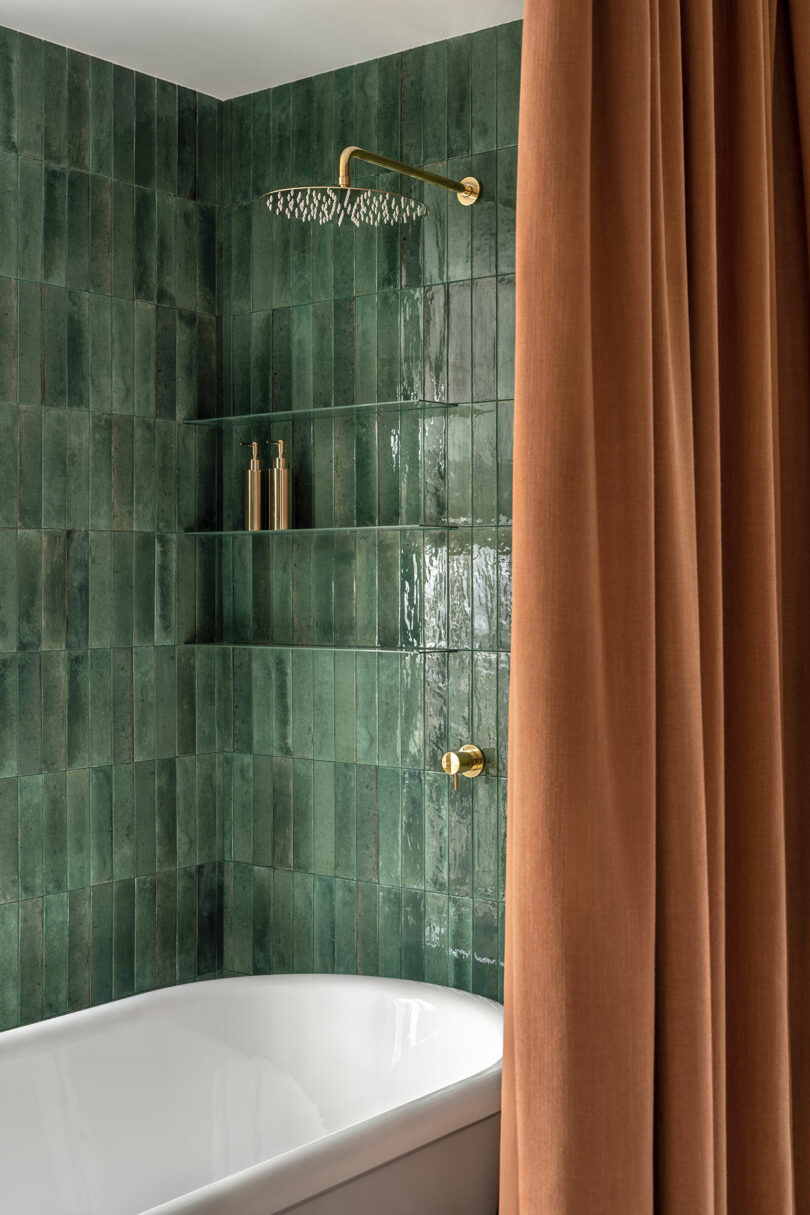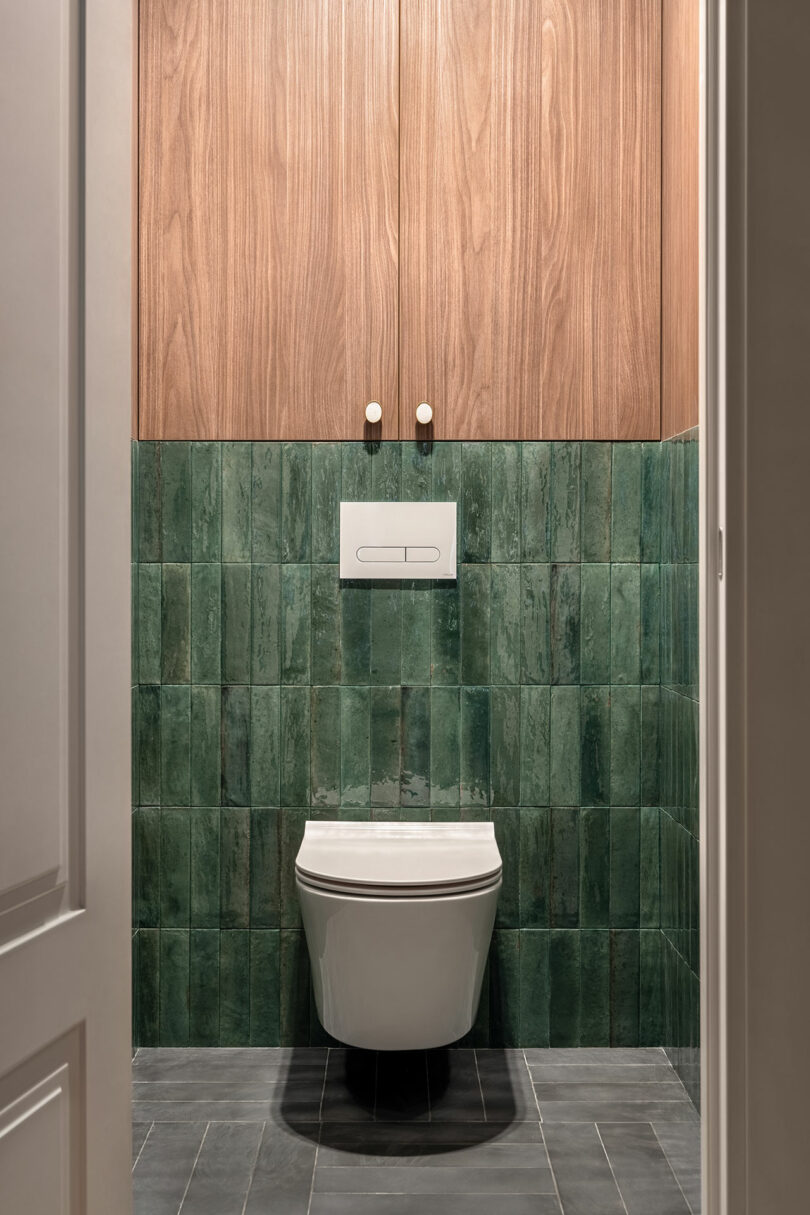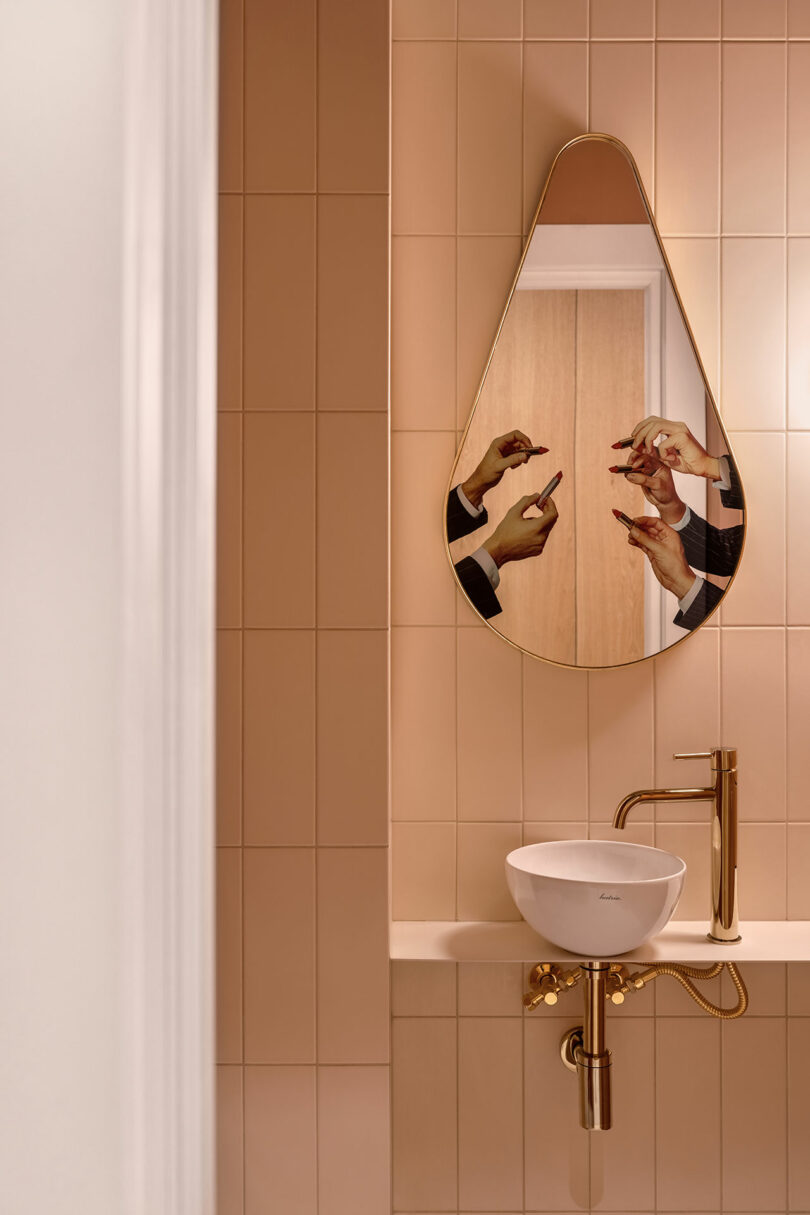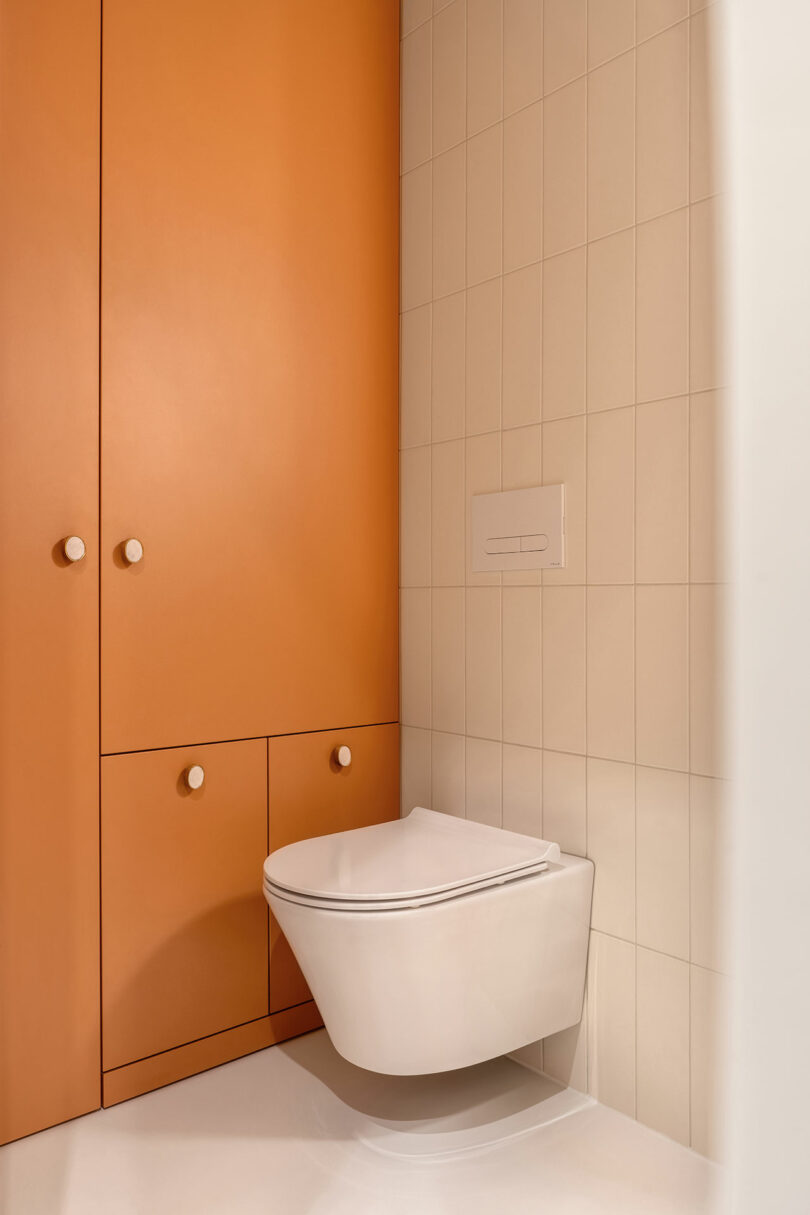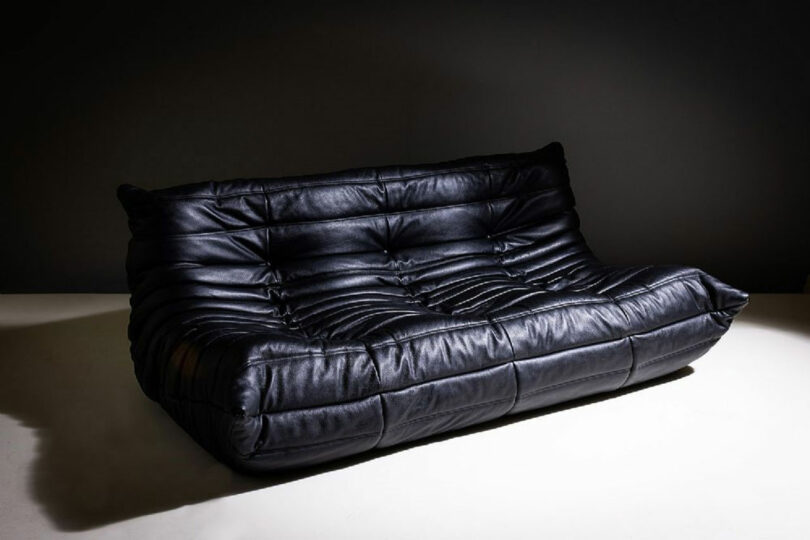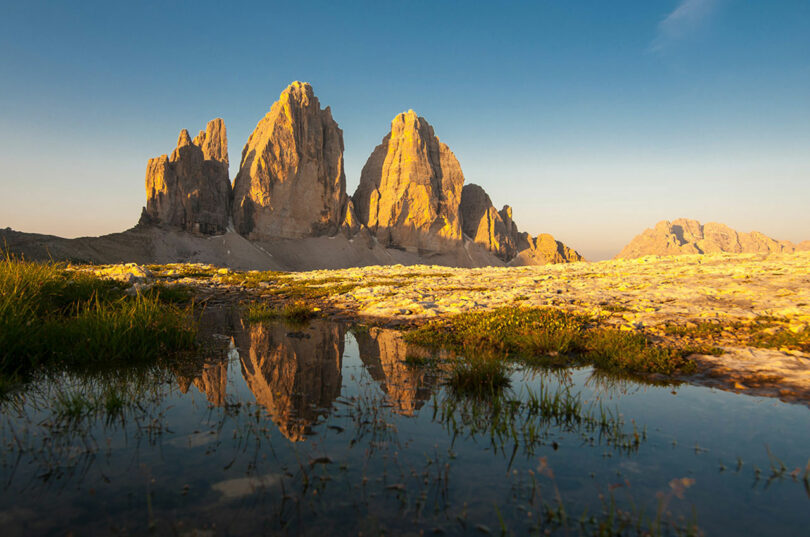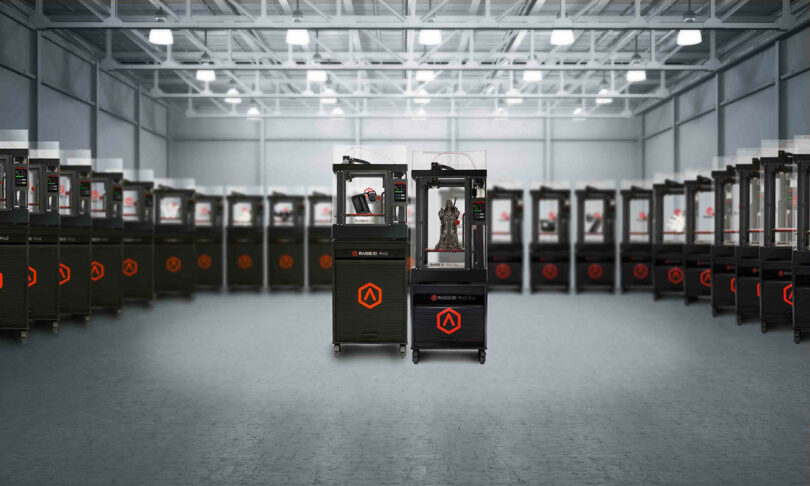Category: Architecture
Casamontesa Enlists Urban Aesthetics for a Mountain Retreat
[ad_1]
Nestled in the scenic western mountains near Madrid, Spain, Casamontesa, designed by Lucas y Hernández-Gil of Kresta Design, stands at the crossroads of nostalgia and modern design. Originally built in the 1970s as part of a hotel complex, the bungalow exhibits an intriguing fusion of rustic charm and mid-century modern aesthetics, wrapped in a touch of kitsch. Despite its quirky elements, the house has retained its character, which became the focal point of a careful redesign.
The owners, a dynamic young couple from the bustling center of Madrid, sought a retreat that combined modern comfort with a deep connection to the surrounding natural beauty. Their desire was clear: a compact yet functional space that harmonized with its lush garden and offered a tranquil escape from city life. Addressing both the architectural and interior design challenges, the goal was to reshape the home in a way that enhanced its relationship with the outdoors while making the interiors more spacious and functional.
A key aspect of the renovation was reimagining the windows. The design team created large, recessed frames that not only bring more light into the house but also transform the views into framed works of art, highlighting the beauty of the natural surroundings. These deep window boxes are a distinctive feature of the renovation, providing a sense of openness and integration with the landscape.
Inside, a custom kitchen island became the centerpiece of the home, serving multiple functions: a space for cooking, dining, and even working. This multifunctional island, anchors the interior design and serves as a gathering point, emphasizing the open-plan layout of the house.
To create a sense of cohesion, the designers employed handmade burgundy tiles to line both the window recesses and the kitchen island. The glossy surface of these tiles contrasts with the home’s other materials, including Campaspero stone floors and waxed plaster walls, which offer a muted, textured backdrop to the vibrant tiles. This interplay of textures and finishes adds depth and richness to the overall aesthetic.
For more information on Lucas y Hernández-Gil of Kresta Design, click here.
Photography by José Hevia.
[ad_2]
Source link
George Smart on His Favorite Modernist Architecture
[ad_1]
Durham, North Carolina-based George Smart spent three decades as a management consultant for Fortune 500 companies like Boeing, Microsoft, and Cisco. While he was well-compensated, it was less than fulfilling work for someone who wanted to make a difference. “There were some wonderful smaller clients, but most of the large organizations wanted to say that they tried to fix problems, rather than actually fixing them,” says Smart.
While researching design ideas for a new family home, Smart discovered a surprising scarcity of online resources. He decided to build his own library, and so NCModernist, and later USModernist, were born. It is the world’s largest nonprofit educational archive dedicated to the documentation, preservation, and promotion of Modernist residential design.
A passionate advocate for Modernism, Smart realized that there were plenty of fellow enthusiasts out there when he hosted his first house tour. He expected maybe 50 people to attend, but 250 people showed up instead, which was a game-changer. To date, 165 tours have been held across the globe, from the United States to Europe and the Middle East (plus 130 local Thirst4Architecture social gatherings), attracting tens of thousands.
Smart has plenty of tasks to keep track of, yet instead of utilizing his computer, he prefers to keep an old-school legal pad by his desk. He creates a to-do list, and by Sunday he’s cleared it, ready for the next one.
Bringing Modernism to the masses has been rewarding for Smart, who gets thanked every day by people who use the archive and discover something about their family, or find inspiration for their new or renovated house projects. He likes to touch base when he can, making calls often and responding to emails he receives within a day. “People are amazed and delighted, because we’re all so used to getting voicemail; waiting, waiting, and waiting, or being ghosted entirely,” Smart notes. “There have been so many wonderful opportunities from simply answering the phone.”
Today, George Smart joins us for Friday Five!
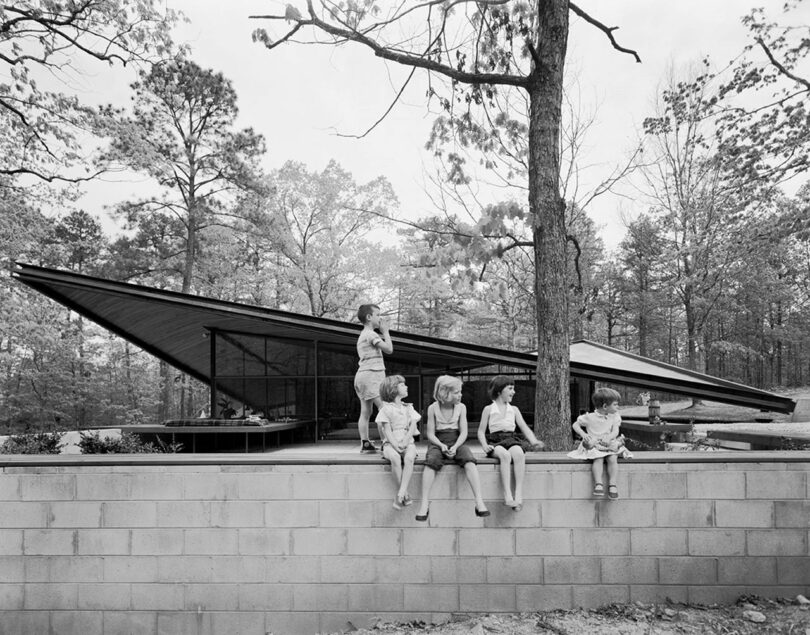
Photo: Ezra Stoller
The Eduardo Catalano House (1954), often referred to as the Potato Chip House, is sadly no longer with us. With a hyperbolic paraboloid roof, the house quickly gained worldwide notoriety for its revolutionary design. Virtually every architect on the planet knew about this distinctive, daring, swooping shape in sleepy Raleigh, North Carolina. The roof, constructed of 2.5-inch-thick laminated wood, spanned an impressive 4,000 square feet resting on only two points, creating a spacious, open interior of about 1,700 square feet flooded with natural light.
There are just two rooms, a main room and a bathroom. In 1956, House and Home Magazine proclaimed it the House of the Decade, a testament to its groundbreaking design. Even the renowned architect Frank Lloyd Wright, known for his dislike of everyone’s work except his own, praised the house. Unfortunately, due to neglect and vandalism and an incompetent roofing contractor, it was ultimately destroyed in 2001.
The house remains an enduring symbol of mid-century modern architecture, and is my inspiration for creating USModernist – to prevent other “livable works of art” from being destroyed.
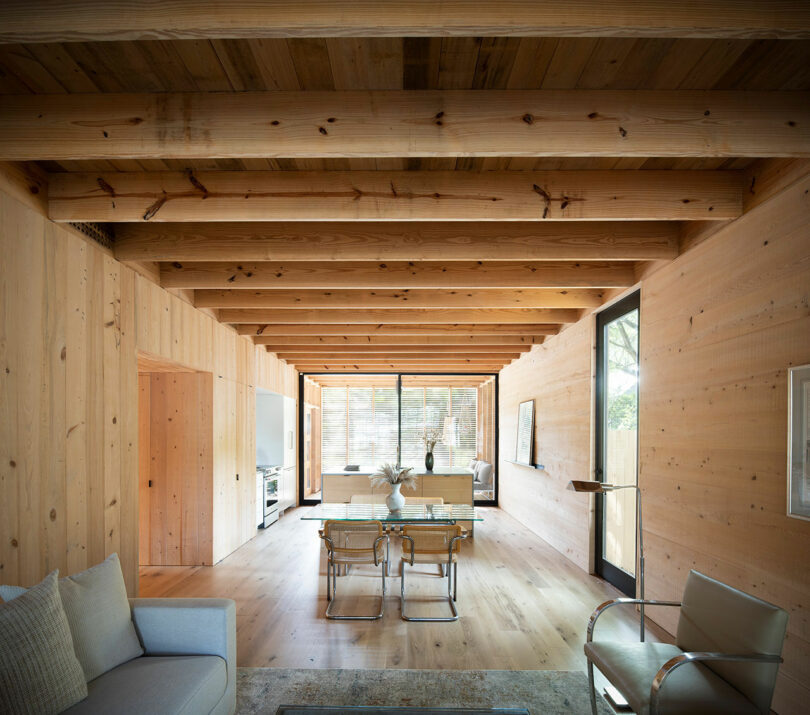
Photo: Bates Masi + Architects
Bates was a well-known and exceptionally talented architect with a legacy of brilliant homes in the Hamptons and on Fire Island. Fun fact: Harry dated my mom way back in the 1950s before coming out as gay, which he was, even before it was remotely socially acceptable. Harry was a gentle, caring man who could distill the essence of a person or family and translate that flawlessly to a house design.
He designed an immaculate small retirement house for himself (2017) in Fernandina Beach, Florida. I got to spend some quality time with him in this remarkable house a few years before he died. With two bedrooms and one bathroom, the house completely hides itself from the street. One might mistake it for a shed. Once inside, however, you see the master at work.
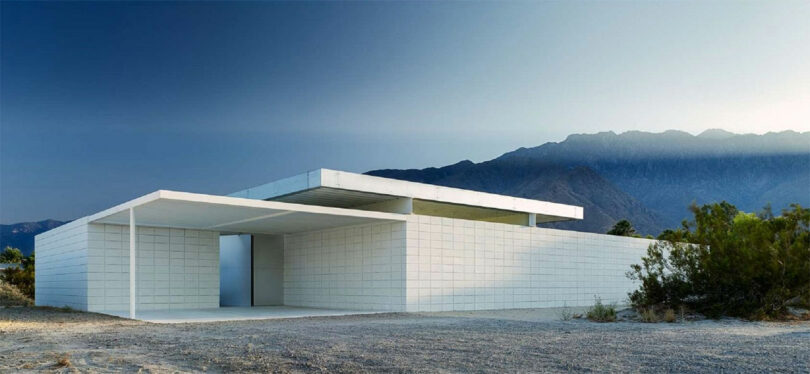
Photo: Joe Fletcher
Hidden away in the Racquet Club area of Palm Springs, California, is Desert One (2005) designed by Jim Jennings. It is a stunning small residence that, like the Catalano House, has only one bedroom and one bathroom. This is my favorite example of timeless desert Modernism. You can’t really tell how old it is; it could have been built in 1955, 1975, or 1995.
Meticulously sited on over half an acre of wild desert terrain, this jewel of a house ensures privacy and preserves the natural beauty of its surroundings. Like the Harry Bates House, it is quite unassuming from the street. Even though the residence itself clocks in at a mere 720 square feet, the enclosed courtyard and pool expands the livable area as a private haven or a fabulous party space. I have a photo of this house on my wall, and I would buy it in a second.
The Frank Sinatra House (1947), designed by E. Stewart Williams, is one of the most iconic homes in Palm Springs, California. This is a house that screams style, it’s the epitome of cool. A two-story, L-shaped structure with a flat roof and large windows with panoramic views of the mountains and the Coachella Valley, you’re immersed in old Hollywood glamor on a huge lot in a posh neighborhood.
Singer and actor Frank Sinatra lived there with Ava Gardner, and the stories of their passionate, tumultuous relationship are legendary. In the master bathroom, the story goes, the crack in the sink is where Ava threw a bottle of champagne at ol’ Frankie and missed. The Sinatra House is a must-see for anyone interested in mid-century modern architecture and is open to visitors several times a year, especially during Modernism Week, when you can also attend parties there.
The Atkinson House (1959) is little known, despite its spectacular location near the Bixby Bridge near Carmel. Designed by Gregory Ain with African-American architect James Garrott, this is one of the most beautiful home sites in America. Because of his advocacy of racial equality in public houses, Ain was investigated for years by the FBI, as were many civil rights leaders at the time. For years the house was owned by Allen Funt of Candid Camera fame.
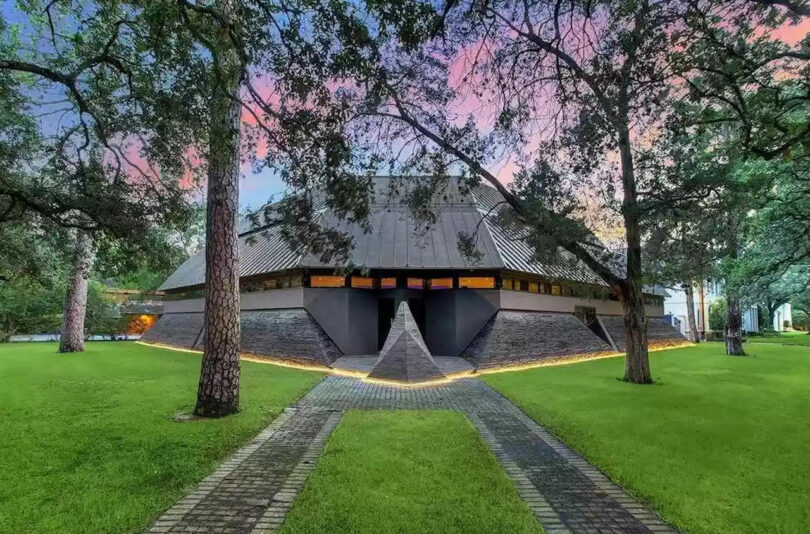
Photo: TK Images for Martha Turner Sotheby’s International Realty
The Darth Vader House (1992) in Houston, Texas, designed by Lynn Spears, is a delightful departure from the ordinary. In a class by itself, the house was commissioned by Star Wars fan Jean Cukier. The house has taken that name because from the front it looks like Lord Vader’s helmet. Neighbors are currently not too happy about the frequent visitors who line up to take Instagram selfies, or the parties held at the house. Well worth a drive-by, or it can be yours, as it is up for sale as of July 2024.
[ad_2]
Source link
A Japanese Coastal Villa on Akiya Beach Inspired by the Ocean
[ad_1]
Overlooking Akiya Beach in Yokosuka-city, Japan, Villa A, designed by teamSTAR, offers a blend of nature, architecture, and luxury living. Located on the picturesque Akiya Beach, near the historically rich town of Hayama – famed as the birthplace of Japanese yachting – the villa perfectly balances modern luxury with the calming presence of the Pacific Ocean. The villa’s design is inspired by the surrounding natural elements, and every detail of its structure works to enhance the sensory experience of living by the sea.
At the heart of Villa A’s design is the distinctive vaulted roof, which mirrors the undulating waves of the ocean. The series of arches flowing across the roof creates an organic, wave-like rhythm, capturing the essence of the sea in architectural form. This structural feature not only defines the villa’s visual identity but also plays a key role in shaping the interior spaces, contributing to an atmosphere of openness and tranquility. Every element is meticulously planned to invite natural light and ocean breezes, making the boundary between the inside and outside feel fluid and ever-changing.
One of the villa’s most striking features is its adaptation to the challenging topography of the site. Situated on a southwest-facing hillside, the structure conforms to the natural slope, minimizing disruption to the environment. Rather than leveling the land, the design embraces the elevation changes, which allowed the architects to create a multi-tiered layout that offers diverse perspectives of the surrounding landscape. Each level of the villa is carefully calibrated to provide a unique visual experience – whether it’s the panoramic views of Mount Fuji from the west or the serene blue expanse of the Pacific that seems to stretch endlessly from the living areas.
The entryway, located on the basement level, sets the tone for the architectural experience. With its smooth, white surfaces reminiscent of an ocean floor, the spiral staircase, evocative of a seashell, leads visitors upward. Upon arrival to the main floor, an expansive view of the ocean greets you, creating a moment of awe and transition as you move from the enclosed space of the lower level to the open, airy upper floors. The villa’s floor plan follows the natural slope of the land, minimizing environmental impact and ensuring a gentle integration into the landscape. The multi-leveled structure allows each space, from the living room to the loft, to showcase distinct ocean views.
The living room, dining area, kitchen, and loft are all arranged at varying elevations, and each space opens up to the vastness of the ocean in its own unique way. The design of the windows and terraces emphasizes these connections. The large corner sash windows in the living room, for example, open fully to create a seamless transition between the interior and the world outside. When open, these windows erase the boundary between the spaces, allowing the salty breeze and the sound of the waves to flow effortlessly into the home.
The interior design of Villa A is equally inspired by the sea. The main level’s floor is a striking emerald green, reminiscent of the vibrant colors of coral reefs and shallow waters. The color palette throughout the villa reinforces the feeling of being immersed in a marine environment, with soft blues, whites, and greens reflecting the shifting hues of the ocean and sky. The space is designed to evoke the feeling of being on a yacht, where every surface and every view connects you to the water.
Beyond its visual and spatial connections to the ocean, Villa A is equipped with luxurious amenities that elevate it to the status of a private resort. The expansive terrace, accessible from several rooms within the villa, features an infinity pool that blends visually with the ocean, creating the illusion of water stretching out endlessly to the horizon. A wood-burning sauna offers a space for relaxation, while the outdoor kitchen and jacuzzi provide a perfect setting for entertaining guests.
Technologically, the villa incorporates advanced construction techniques that push the boundaries of modern architecture. The roof, while visually delicate, is a feat of engineering. Constructed from cross-laminated timber (CLT) panels measuring 7 meters in length, the roof’s arches are both strong and flexible, allowing for the sweeping curves that define the building’s silhouette. The wooden roof structure required precise craftsmanship, and its installation demanded a high level of expertise to ensure both the aesthetic and structural integrity of the design.
Sustainability is another key aspect of the project. By adapting the building’s footprint to the natural contours of the hillside, the architects minimized the need for extensive excavation and soil displacement. This thoughtful approach not only reduces environmental impact but also enhances the villa’s integration into its surroundings, making it feel like an organic extension of the landscape rather than an imposition on it.
For more information on teamSTAR, visit starchitects.info.
Photography by Kenya Chiba.
[ad_2]
Source link
Blending Vintage Charm and Modern Minimalism in Kyiv Apartment
[ad_1]
Architectural design studio Between the Walls took on the challenge of transforming a 721-square-foot apartment in Kyiv’s Comfort Town complex into a space where old-world nostalgia meets modern minimalism. Located on the 16th floor, the Old&New apartment offers sweeping views of the Dnipro River and Kyiv’s urban landscape, perfectly capturing the mix of calm and bustle that defines the homeowner’s lifestyle.
The apartment is designed for a client who embraces both a healthy lifestyle and a deep sense of individuality. An avid traveler and active participant in social causes, the homeowner’s vision went beyond typical aesthetic goals, focusing on practical elements that support her well-being. The resulting space reflects her values and personality, with clever design choices that blend functionality and visual appeal.
The design of this one-bedroom apartment is both striking and intentional. The green kitchen cabinet, for instance, is not just a bold visual centerpiece but also a multifunctional unit that conceals appliances and storage spaces. Inspired by American minimalist Donald Judd, the kitchen table and shelving units maintain a clean, refined simplicity that contrasts with the more textured and nostalgic elements of the home.
One of the standout features of the living room is a plush pale pink sofa that serves as the seating for movie watching via a projector. Suspended from the ceiling and a specially treated wall for optimal image projection, the apartment transforms into a personal cinema – reflecting the client’s desire for high-end amenities without unnecessary excess.
The bedroom strikes a warm and familiar tone with vintage carpets, rounded lighting, and wooden details that evoke the comfort of a grandparent’s home, a request from the client. These design elements are thoughtfully juxtaposed with the industrial edge of exposed concrete ceilings. A striking wooden propeller doubling as a light fixture and ceiling fan offers a whimsical touch to the room, merging the traditional with the unconventional.
In the primary bathroom, the aesthetic takes a vintage turn, with green tiles, stone countertops, and an antique-style mirror creating an atmosphere that feels both timeless and fresh. The bathtub, slightly elevated on a podium and shielded by a terracotta curtain, offers an oasis within the urban landscape – ideal for unwinding after a busy day in the city.
Originally scheduled to begin in early 2022, the project faced significant delays due to the outbreak of war in Ukraine. Despite the unpredictable circumstances, the client decided to resume the renovation later, a testament to her determination to move forward and reclaim a sense of normalcy.
While Kyiv struggled with power outages and the constant threat of air raids, the design team navigated supply chain issues, sourcing materials internationally. With chief designer Victoria Karieva temporarily residing in France, crucial items were imported to ensure the project’s completion. This resourcefulness gives nod to the studio’s resilience and commitment to delivering high-quality designs, even in the most challenging conditions.
For more information on Between The Walls, visit betweenthewalls.com.ua.
Photography by Andrey Bezuglov.
[ad_2]
Source link
How LEGO Architecture Brings Iconic Structures to Life – Parametric Architecture
[ad_1]
How LEGO Architecture Brings Iconic Structures to Life Parametric Architecture
[ad_2]
Source link
Matthias Hollwich on His Favorite Mountain Bike, Nature + More
[ad_1]
Matthias Hollwich’s time at university was seminal, marked by his natural curiosity. He often wondered what it would be like to contribute to the creation of things that people actually use. Yet it was a summer program that changed his trajectory in a way he could have never imagined. After applying for the three-week course, and initially receiving a rejection, Hollwich convinced his professor to allow him to participate.
The classes in Venice, Italy were abstract and poetic, the antithesis of the traditional educational system in Germany, his home country. While most of his classmates spent time at the beach, Hollwich was working day and night in the studio on concepts and models, with guidance from guest instructor Ricardo Scofidio, partner at Diller Scofidio + Renfro. “He became my teacher, speaking about abstract ideas in architecture, challenging me to explore,” says Hollwich.
Just three weeks after Hollwich’s return from his sojourn, he received a phone call from Scofidi telling him to report for work at the New York-based firm (then Diller + Scofidio) in 48 hours. After additional stints at Eisenman Architects and OMA with Rem Koolhaas, Hollwich founded HWKN in 2008.
Hollwich and his team emphasize maximum human engagement, ecological innovation, and technological exploration, which includes artificial intelligence. Even with the current debate centered on AI, Hollwich is fascinated by all of the possibilities. How it may impact our lives – for better or worse – he can’t say. He is already using it to streamline everyday tasks, and is now focused on how it will shape his design process.
Not every aspect of the architect’s life is about a digital experience, however. The five acres upstate that he owns with his partner is a haven, reminiscent of the Heimat of his youth. “It is a place of untapped potential, but also of endless beauty,” Hollwich adds. “It is an ecology that was there before, and will be there for a million years to come.”
Today, Matthias Hollwich joins us for Friday Five!

Photo: Dado Ruvić; Reuters
I engage with ChatGPT to correct my grammar, provide some ideas, and reflect on the work I am doing. My appreciation for AI began in London about two years ago with tech professionals from major firms like Amazon, Google, and Apple. This meetup sparked my initial interest in AI, leading to more explorations of AI platforms and their abilities. I felt really driven by these personal explorations, and from there I’ve completely shifted my focus to integrating AI into my architectural practice. As wide as the concept goes, ChatGPT remains a loyal friend of sorts. It’s simple, practical, and gives me what I need on a daily basis.
This is my Ligne Roset sofa at home, and I love seeing it and sitting on it. What really gets me is the shape. It’s low to the ground and has these deep, cozy curves that make you want to sit down and never get up. It doesn’t have a traditional frame, so it almost feels like it molds to me. Plus, the quilted design with all those folds and pleats gives it such an inviting look. I love that it is both sophisticated and super comfortable, which isn’t always easy to find in a piece of furniture.
3. Raw Nature
The Drei Zinnen near Zillertal are the mountaintops that I remember best from my youth. They stand untouched by human hands, embodying a raw, unspoiled majesty that’s hard to find elsewhere. It’s this pure, natural splendor that has shaped my appreciation for the unaltered and the authentic. Nature reminds me of the importance of preserving beauty and experiencing it in its most unrefined form.

Photo: Courtesy of Expedition Portal
The ultimate fitness and commute combo, this is a bike I use to commute from work to home and everywhere else. It is incredibly reliable, offering a smooth and steady ride whether I’m on a busy road or a more challenging trail. It also turns a typical commute into an opportunity for exercise. Riding this bike not only gets me where I need to go but also helps me stay fit and energized. It’s very thoughtfully engineered and is designed to be both rugged and versatile, yet it maintains a lightweight feel that makes it easy to handle. The ergonomic design and adjustable features ensure that it fits comfortably, making every ride enjoyable.
The Raise3D printer is an essential tool for us at the office, bridging the gap between our digital designs and their physical manifestations. It translates our virtual concepts into real, three-dimensional objects, allowing us to see and touch what we’ve been working on in the digital realm. This printer helps us grasp the true potential and impact of our designs. By creating physical prototypes, we can evaluate their form, functionality, and overall effectiveness in a tangible way. It’s invaluable for testing ideas, making adjustments, and fully understanding how our work will translate into the real world.
Works by Matthias Hollwich:
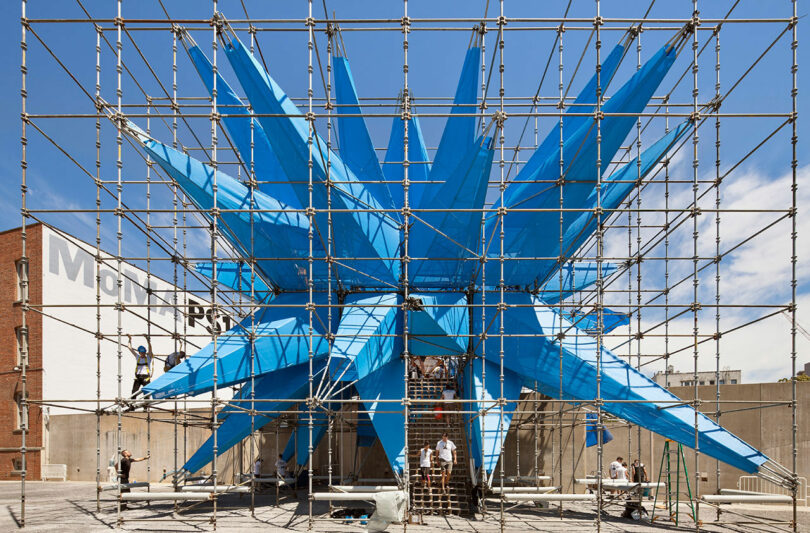
Photo: Michael Moran
Wendy Wendy is an experiential installation by the architecture firm HWKN, created for the 2012 MoMA PS1 Young Architects Program. The project is a large-scale, interactive structure made of scaffolding covered in spiky blue fabric treated with titania nanoparticles. These nanoparticles enable the fabric to neutralize airborne pollutants, effectively purifying the air around the installation. Wendy serves multiple purposes: it is an architectural experiment, an environmental statement, and a social space for public interaction. The design challenges traditional notions of architecture by integrating ecological functionality with bold, unconventional aesthetics. The installation features various interactive elements, including misting nozzles, sound systems, and lights, making it a dynamic and engaging space for visitors. Its unique form and environmentally conscious design highlight the potential of architecture to address urban environmental issues creatively.
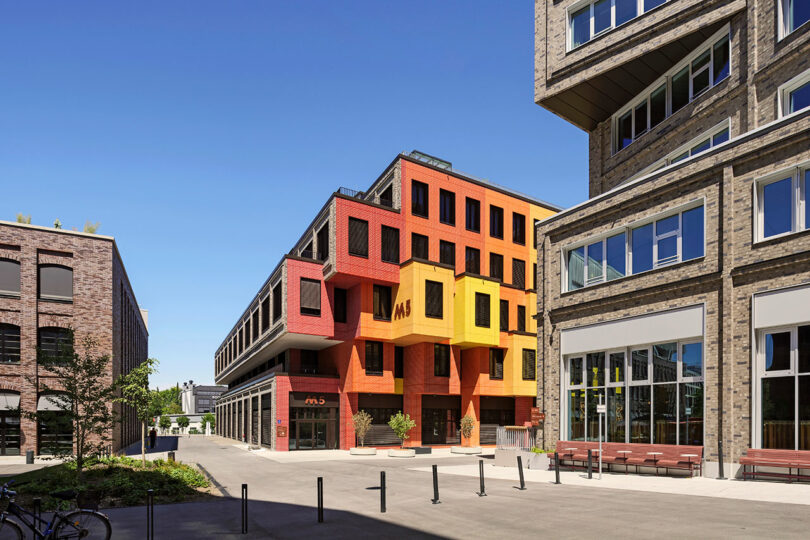
Photo: Klemens Renner
Die Macherei München Designed in partnership with the firms OSA Ochs Schmidhuber Architekten and Holger Meyer Architecture, Die Macherei München is the first LEED-GOLD neighborhood in Europe. The complex consists of six multi-purpose properties, three of which have been designed by HWKN, including the new hotel, Scandic München Macherei, and two office buildings. The Scandic München Macherei hotel features a rough, earthen-brown brick facade that appears to be in motion from a distance, with ripples across its surface. This main canyon leads to another office building and a public plaza, both clad in glossy, red-to-orange brick, reminiscent of Munich’s historic brick-making tradition, including those used in the Frauenkirche. A design breakthrough, the highly inviting complex transforms a once-barren, industrial area into a neighborhood that is welcoming, human, eventful, and filled with emotion.
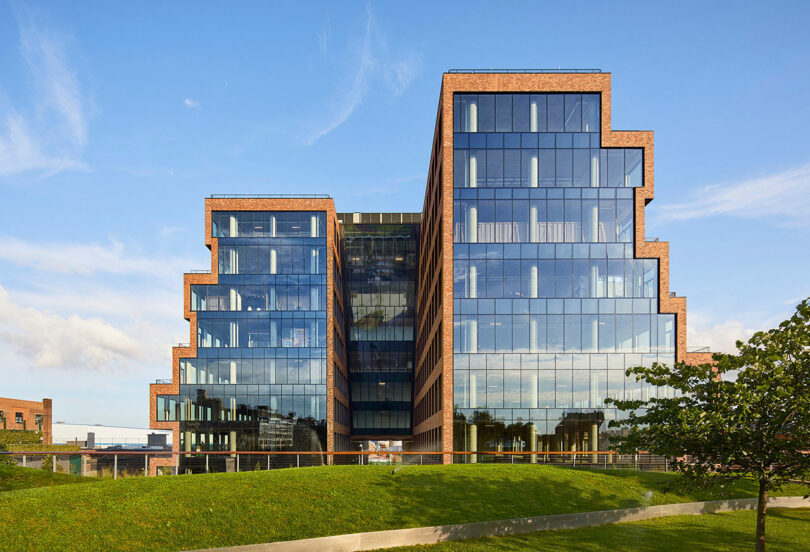
Photo: Ty Cole
25 Kent HWKN designed 25 Kent from the outside in by choosing local forces, shifts within society, and the power of creativity as guiding principles. 25 Kent is a premier office building in Brooklyn, known for its distinct architecture and vibrant location in Williamsburg. Spanning 500,000 square feet, it features floor-to-ceiling windows, terraces on each level, and an activated rooftop. The building fosters a dynamic work environment with its blend of contextual design appearing like stacked warehouses, accessible location with an open canyon passing through the building, and abundant green spaces at the recessing volumes with waterfront access, making it a preferred destination for many companies.
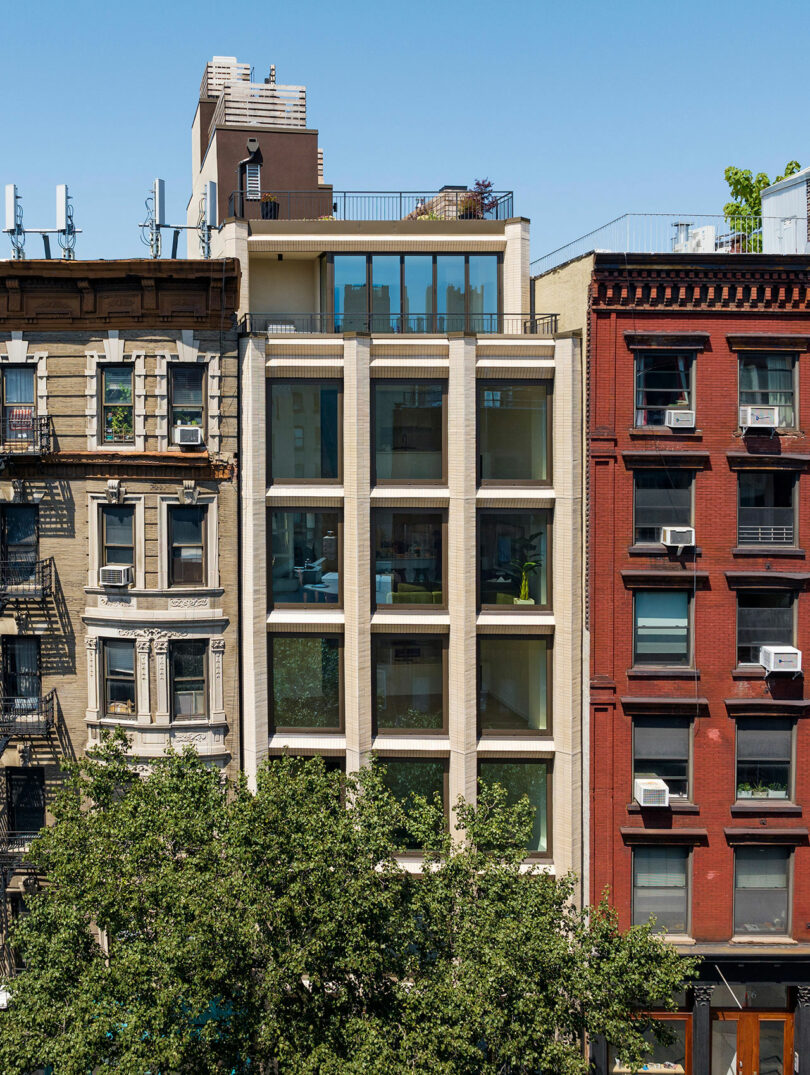
Photo: Michael Moran
378 Broome St HWKN pioneered a distinctive approach for the boutique residential building at 378 Broome Street by combining hyper-modern aesthetics with a profound respect for the local context. The seven-story townhouse-type building displays a highly distinctive façade, with sandstone-colored brick, triangular-shaped uprights, and oversized windows. HWKN’s architectural approach blends contextual design with modern updates, adhering to its surroundings while embracing contemporary aesthetics. The inside consists of four spacious residences: two large duplex apartments with two single, full-floor apartments in between. Located in one of the city’s most sought-after neighborhoods, 378 Broome offers easy access to iconic restaurants, shops, and cultural landmarks, with major subway lines nearby.
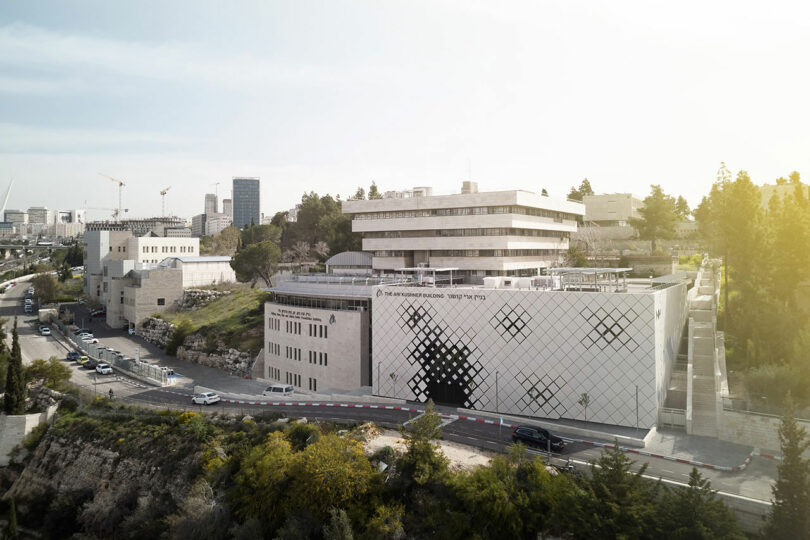
Photo: Dor Kedmi
Jerusalem Academy of Music and Dance Designed by New York firm HWKN and Tel Aviv-based practice HQ Architects, the new Advanced Inter-Arts Center building significantly expands this famed institution’s presence in Jerusalem. The Academy sought to confront a persistent programmatic flaw in its operation as a world-renowned and international institute of performing arts. While its curriculum is strong, the campus lacked a proper performance space or a stage of any kind. HWKN and HQ’s bold vision brought to life the new 2,500 m² building that sits adjacent to the original JAMD building. A contextual stone façade with a twist from HWKN now extends across the entire complex, creating curiosity while directing the flow of people into the welcoming buildings lobby.
[ad_2]
Source link

